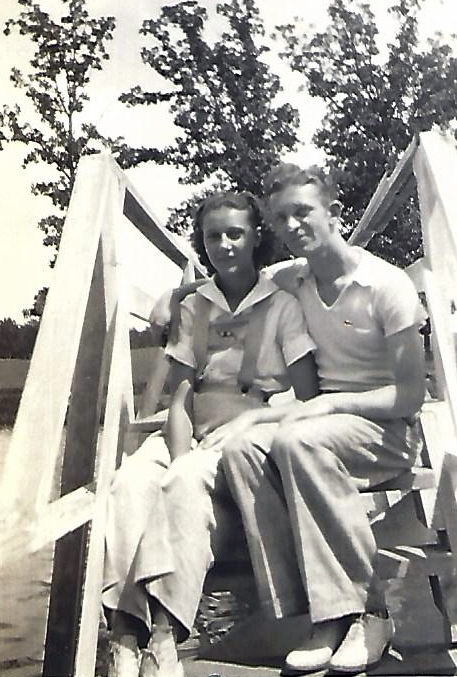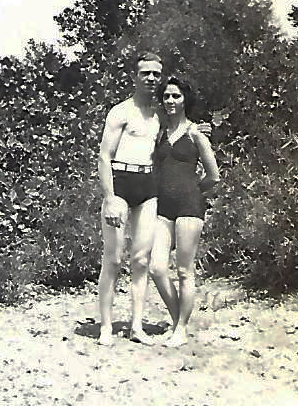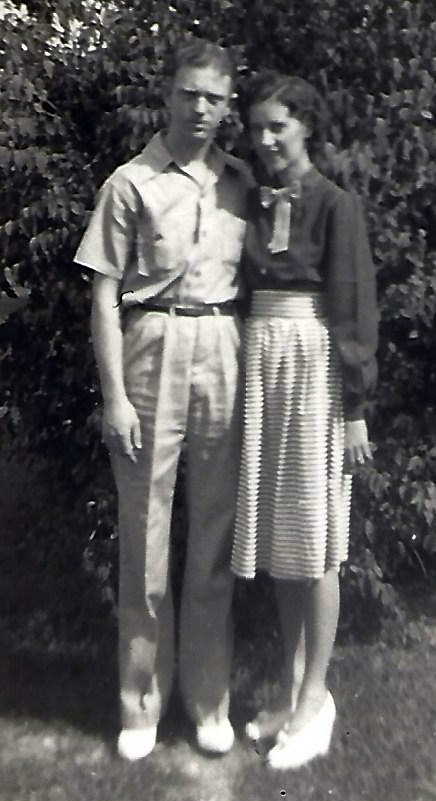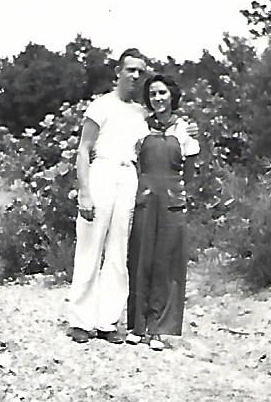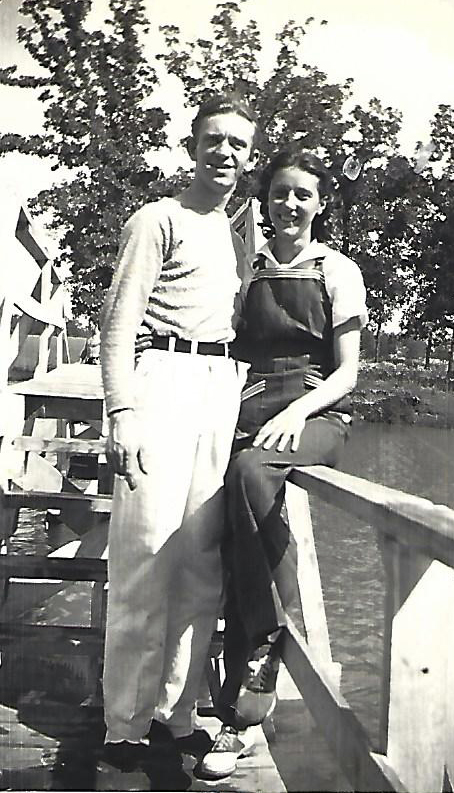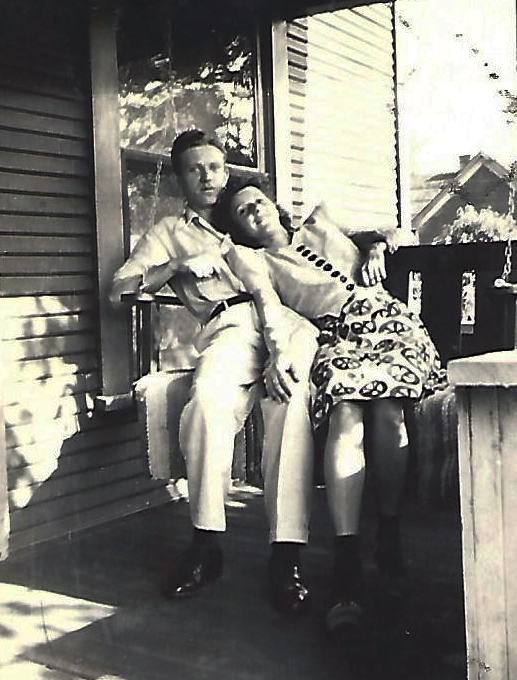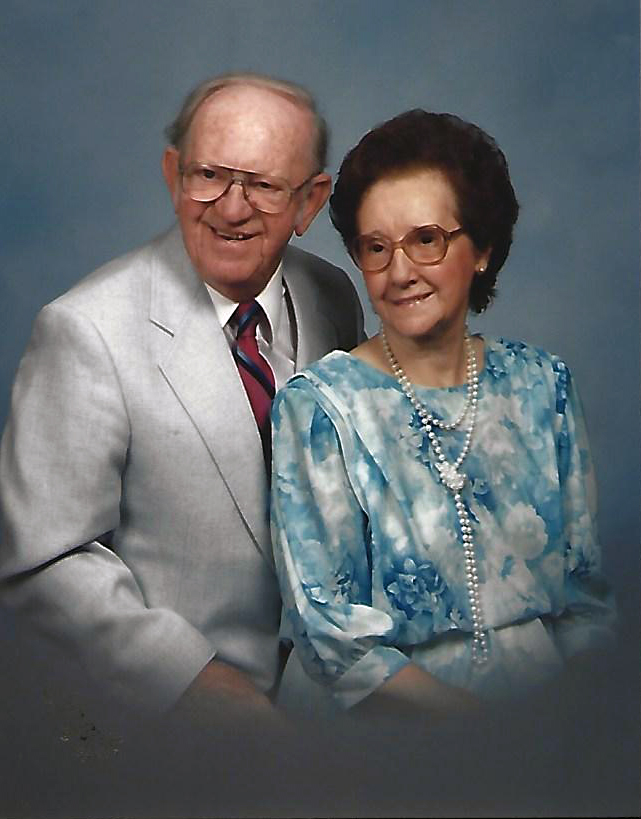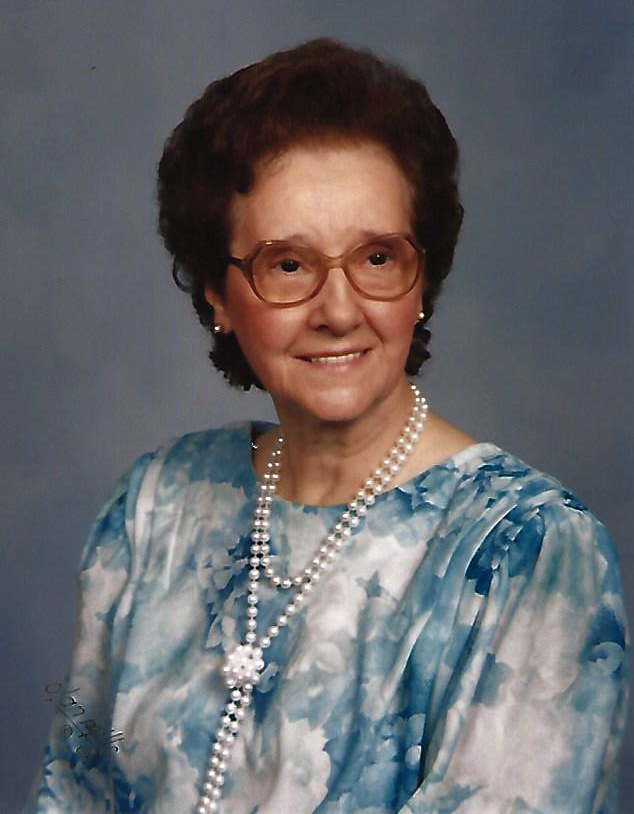1916 – Emil Ochonicky
Emil Ochonicky was born the evening of July 11, 1916 to Štefan Ochodnický and Eva Klč (č is pronounced “ch”) at their home at 1708 Menard Street near Lafayette Avenue in Saint Louis, Missouri. Magdalena Krobot, a midwife, assisted with the delivery and helped welcome Emil into the world.
Emil was the fourth of five children born to Štefan and Eva.
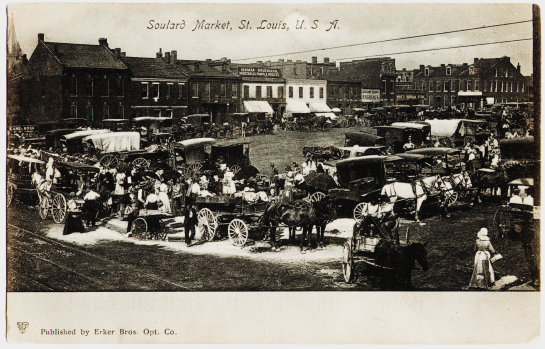
Their home on Menard Street was located in the Soulard neighborhood of St. Louis, just south of downtown. Soulard is one of the oldest neighborhoods in St. Louis with homes dating from the mid to late 1800s. The area was named for a French surveyor, Antoine Soulard, who surveyed the area for the King of Spain while St. Louis was under Spanish control from 1763 to 1800. During that period, St. Louis was a part of the “Ylinneses” (Illinois) region of the province of “Luisiana” (Louisiana). Originally an area of large country farms owned by wealthy citizens, the area was sub-divided and developed into housing by Soulard’s widow Julia in the late 1830s. The Soulard community was annexed by the city of St. Louis in 1841. The following year, Julia Soulard donated land to the city to be used perpetually as a public market—which is known today as the Soulard Market.
The spelling of the Ochonicky last name was originally Ochodnický or Ochotnický, with a “d” or “t”. The accent mark over the letter “y” was of course dropped in the United States. Štefan spelled his family name Ochodnicky with a “d”, but his eldest son Ján (John), who had been raised in Slovakia until age 16, always spelled it Ochotnicky with a “t”.
Svatý Lukáša Slovensky Luteranski Cerkvica
On July 16, 1916, just five days after his birth, Stefan and Eva Ochodnický had Emil baptized at Svatý Lukáša Slovensky Luteranski Cerkvica (Saint Lucas Slovak Lutheran Church) by Pastor Juraj Majoros, who served as pastor there from 1913 to 1944. The baptismal certificate lists the parents as Štefana Ochotnicky and Evy nee Klč. The baptismal sponsors were Michal and Maria Stančik, and Juraj and Anna Hlavaty.
In 1916, Svatý Lukáš Cerkvica (Saint Lucas Church) was located at 2006 South 13th Street at Allen Avenue in Soulard. The church was founded by 36 Slovak immigrant families in Soulard on January 29, 1905 and was the first Slovak Lutheran church west of the Mississippi.
It was first organized in the parochial school of historic Trinity Lutheran Church, the oldest Lutheran congregation of any nationality west of the Mississippi, located on 8th Street near Lafayette Avenue. Trinity Church was founded in 1839 as Die Dreieinigkeitskirche by Saxon immigrants who had planned to settle in Perry County, Missouri but ended up staying in St. Louis. The school where Saint Lucas was organized is today the oldest continuously operating elementary school in St. Louis.
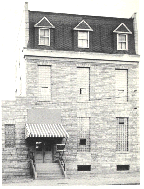
During its first eighteen months, Svatý Lukáš was served every other week by Slovak-speaking students from Concordia Seminary in Springfield, Illinois. Its first regular pastor, L.A. Jarosi, arrived June 1, 1906 and stayed until October 15, 1907. In January 1909, under Pastor Theodore A. Balent, the church purchased a three-story building at 1921 South 9th Street which had served as the former “Self-Culture Hall” building. Since 1895, the Hall had been the site of a free community school for working people run by the Ethical Society of St. Louis.
In 1914, the congregation learned that St. Paul Friedens Church at 13th Street and Allen Avenue was for sale, following a merger of that church with the Jesus Church at 12th and Victor. St. Paul Friedens Church had been founded in 1886 following a dispute at the nearby St. Paul’s Evangelical Church at 9th and Soulard (now Lafayette) which created a rift in the congregation.
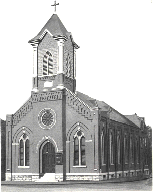
The Svatý Lukáš congregation purchased the church, parish hall, and parsonage for $14,500 and dedicated the structure on April 19, 1914. By 1918, the church developed plans to establish a parochial school, but due to a lack of teachers, it did not open until 1928.
Svatý Lukáš was a focal point for the Slovak community. Nearby was Saint John Nepomuk Church at 1625 South 11th Street which served the Czech (Bohemian) community. Pastor Juraj (George) Majoras warned the young people of his congregation to stay away from the Czech youth. Apparently, the two ethnic groups didn’t get along, due to centuries of animosity in their ancestral homeland.
Štefan and Eva Ochodnicky
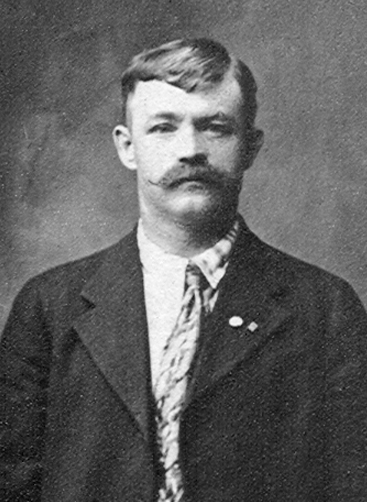
Štefan had been born in the village of Moravské Lieskové on March 3, 1878 to Andrej Ochodnický and Alžbeta Káš. Alzbeta was a 27-year-old widow when she married Andrej in 1873. We don’t know Andrej’s occupation, but his father, Ján Ochodnický, was a miller in the neighboring village of Bošáca. Perhaps Andrej followed in his father’s trade.
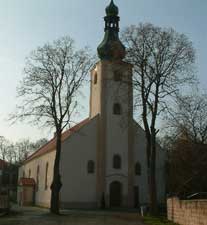
Štefan (Steve) Ochodnicky, who was 37 when Emil was born, and Eva, who was 30, had grown up in the region of Slovakia that for a thousand years had been a part of Hungary. They were married in the small town of Lubina on February 16, 1904 in the Evangelical (Protestant) church.
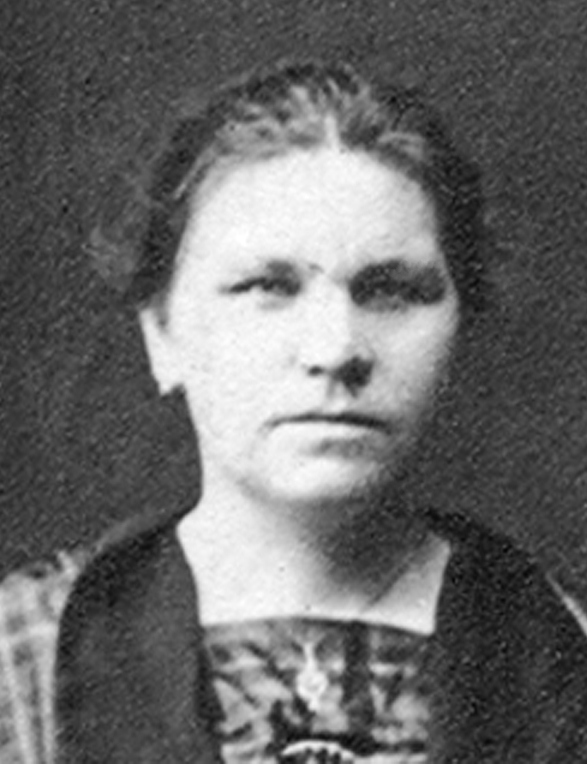
Eva Ochodnicky was born Eva Klč on September 6, 1885 at house number 39 in the village of Hrušové to Štefan Klč and Anna Plašenka. Her father Štefan Klč was a miller also.
Emil’s siblings and parents
Emil Ochonicky was the third of four brothers born to Stefan and Eva. The eldest, Ján (John), was born in Slovakia on November 25, 1904.
Stefan had emigrated to the United States in February 1906. When Eva came to the United States the following year, she left her 2 ½ year old son Ján behind. He was raised in Hrušové by his maternal grandmother Anna Plašenka for the next twelve years until her death in 1919.
In the meantime, Stefan and Eva had four more children on this side of the Atlantic. Alzbeta (Elizabeth), their second child, was born in 1908 and died in 1910 when she was only 18 months old. Pavel (Paul) was born on September 3, 1911, Emil on July 11, 1916 and Jaroslav (Jerry) on February 18, 1922.
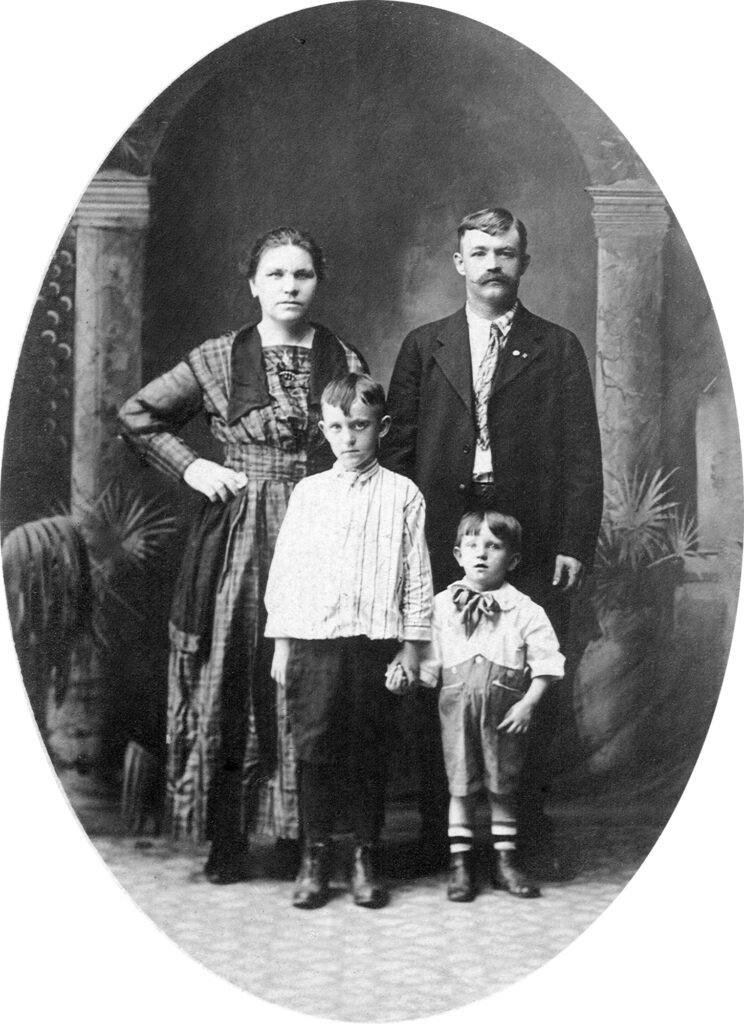
In 1920, after the death of his grandmother in Slovakia, John, then 16, traveled to St. Louis to rejoin his parents and meet his brothers. They were complete strangers to him, and he soon found that his mother was very different from his loving grandmother.
Emil remembered his mother as a large, domineering woman who ran the household with an iron hand. She made the rules and would not bend them. Emil was not allowed to play on Saturdays until he had scrubbed the stone front steps of the house. No amount of pleading and bargaining could sway his mother.
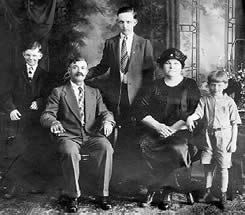
All of the children were expected to work for the family’s welfare and all of their wages had to be turned in to help the family make ends meet. As a young boy, Emil sold newspapers before and after school, and then worked in a bowling alley in the evenings. In those days newspapers sold for three cents. On weekends he helped his older brother Paul hang wallpaper, receiving no compensation for his efforts.
On the other hand, Emil remembered his father as a quiet, gentle man who could be very profound when he spoke. Stefan stood about 5’6” tall, but was powerfully built. He worked his entire life as a laborer. In 1918, Stefan worked for the American Manufacturing Company at 9th and Marion, and later he worked for the Algonite Stone Company at Kingshighway and Christy. Before he died, he worked at a job that required him to clean out the insides of railroad tanker cars. He used caustic materials in a confined space with poor ventilation. He eventually died of emphysema when Emil was just 25.
The boys attended grade school at Svatý Lukáš and then went to high school at McKinley. Only Jerry completed high school, graduating as the valedictorian of his class.
Martin and Anna Plasenka
In his teens, Emil worked for his uncle and aunt, Martin and Anna Plasenka, (originally spelled Plašenka) in their grocery store at 1120 Sidney Street. Anna, who was Eva Ochodnicky’s sister, was also a strong woman, but more tenderhearted, especially when it came to Emil.
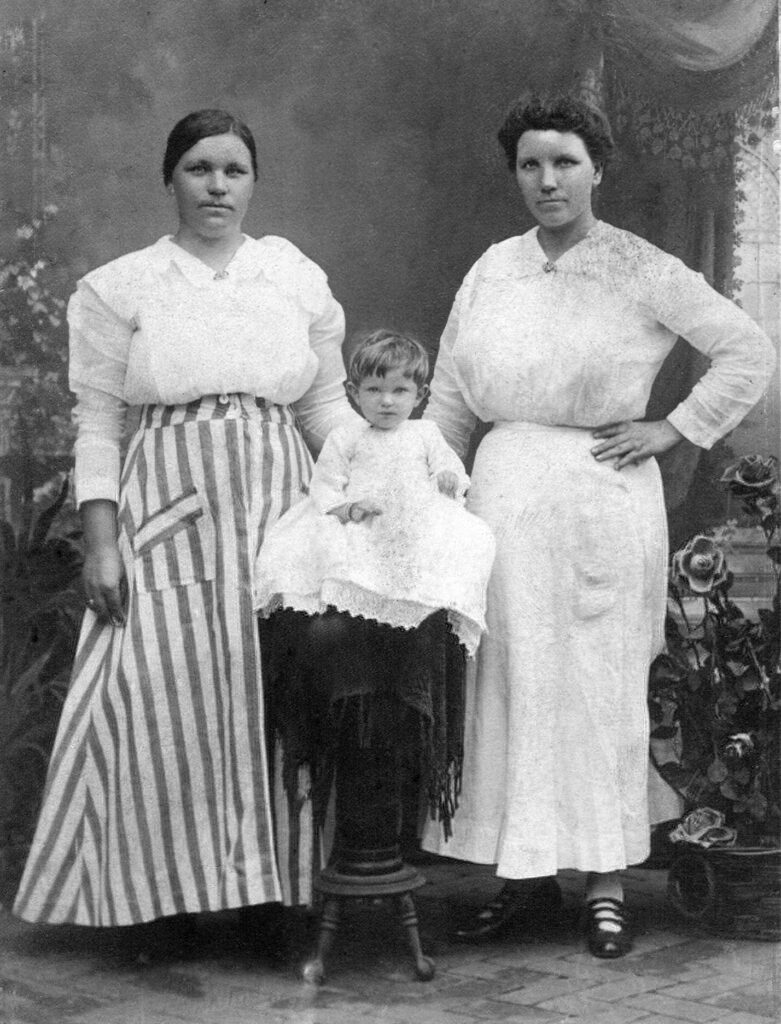
Martin Plasenka was Anna’s second husband. Her first husband was reportedly a lazy man who drank, gambled, and was occasionally violent. Anna sent him back to Slovakia because he didn’t fit into her dream of economic prosperity.
Emil called Anna and Martin “Teta” and “Ujco” (pronounced “tetta” and “weetzo”) which are the Slovak words for aunt and uncle.
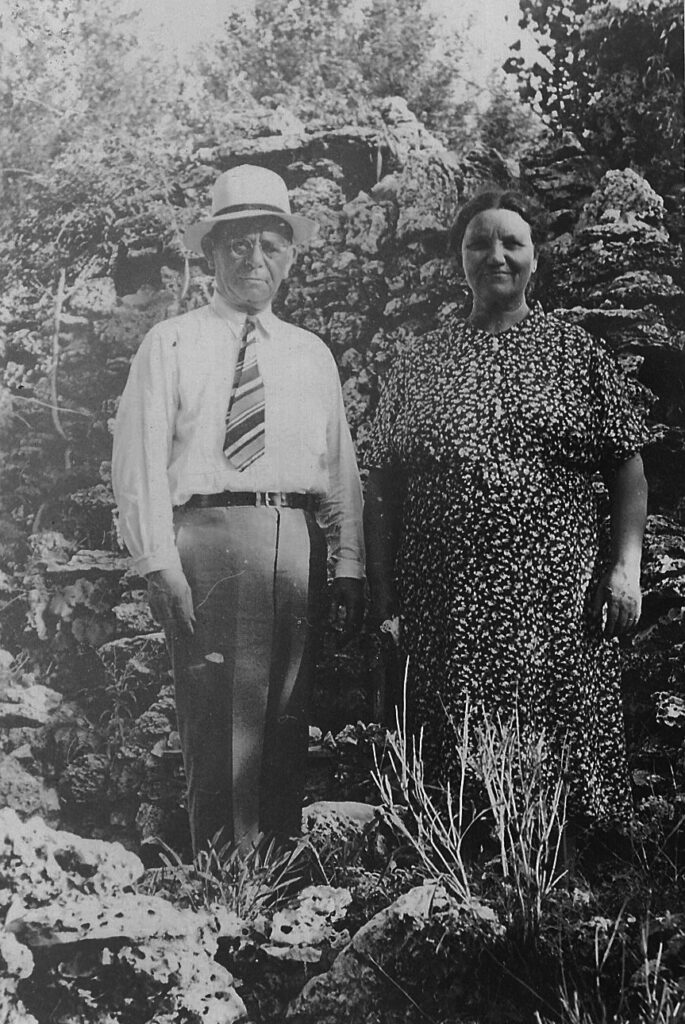
The Plasenkas had purchased property at 1120-1122 Sidney Street in Soulard and constructed a three family flat with a store on the ground floor (1120). They lived upstairs (1120A), ran a grocery business in the storefront downstairs, and rented out the other two apartments (1122 and 1122A).
Emil worked for his aunt and uncle in their grocery store after school and on Saturdays. Initially they would pay him in produce or other groceries. Since Emil was required to turn all of his earnings to the family, cash was not necessarily a requirement. If Emil needed spending money, he had to ask his parents for it. He soon tired of this arrangement. Emil said that all of his “American” friends were able to keep their earnings and he thought his family arrangement was crazy. Emil eventually revolted. He told his mother that he would give her six dollars a week for room and board, but would keep whatever else he made for himself. His mother considered this stealing from the family. Then Emil told Teta and Ujco that he wanted a salary. They paid him $10 a week. Later on he demanded $12. They refused, so he quit and went to work somewhere else for that amount. Several weeks later they told Emil that they wanted him back and that they would raise his salary to $12.
Emil quit McKinley High School after the ninth grade in order to work full time. This would have been about 1931, well into the Great Depression, and Emil would have been about 15 years old.
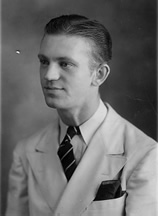
Teta and Ujco eventually tired of running the grocery business and sold it to a man named Harry Walkenbach. Emil continued to work for the new owner, and later, when Harry opened a second store at 12th and Shenandoah, Emil managed the store on Sidney Street for him. By then he was making about $23 a week and had become an experienced meat cutter.
In 1936, when he was 20, Emil met Viola Baer, and fell in love.
1916 – Viola Baer
Viola Baer was born before dawn on the morning of November 15, 1916 to Charles Baer and Julia Clementz at their home at 1039 Allen Avenue in Saint Louis. Mrs. L. Stevens was the midwife at the delivery. Viola was not baptized as a child.
The home on Allen Avenue was also located in the Soulard neighborhood.
Viola was the ninth child born to Charles, who was then 41, and Julia, who was 39. They had been married twenty years earlier on September 1, 1896 in Highland, Illinois, a town populated largely by Swiss immigrants.
Charles and Julia Baer
Viola’s father was born Carl Albert Beer to Jacob Beer and Mary Ammann on September 27, 1875 in Highland. Carl later anglicized his first name to Charles and changed the spelling of his last name from Beer to Baer. His parents had emigrated from the Swiss villages of Tavetsch in Canton Graubünden and Kusnacht in Canton Schwyz. They settled in Highland, Illinois where they met and were married at the Madison County courthouse in 1856.
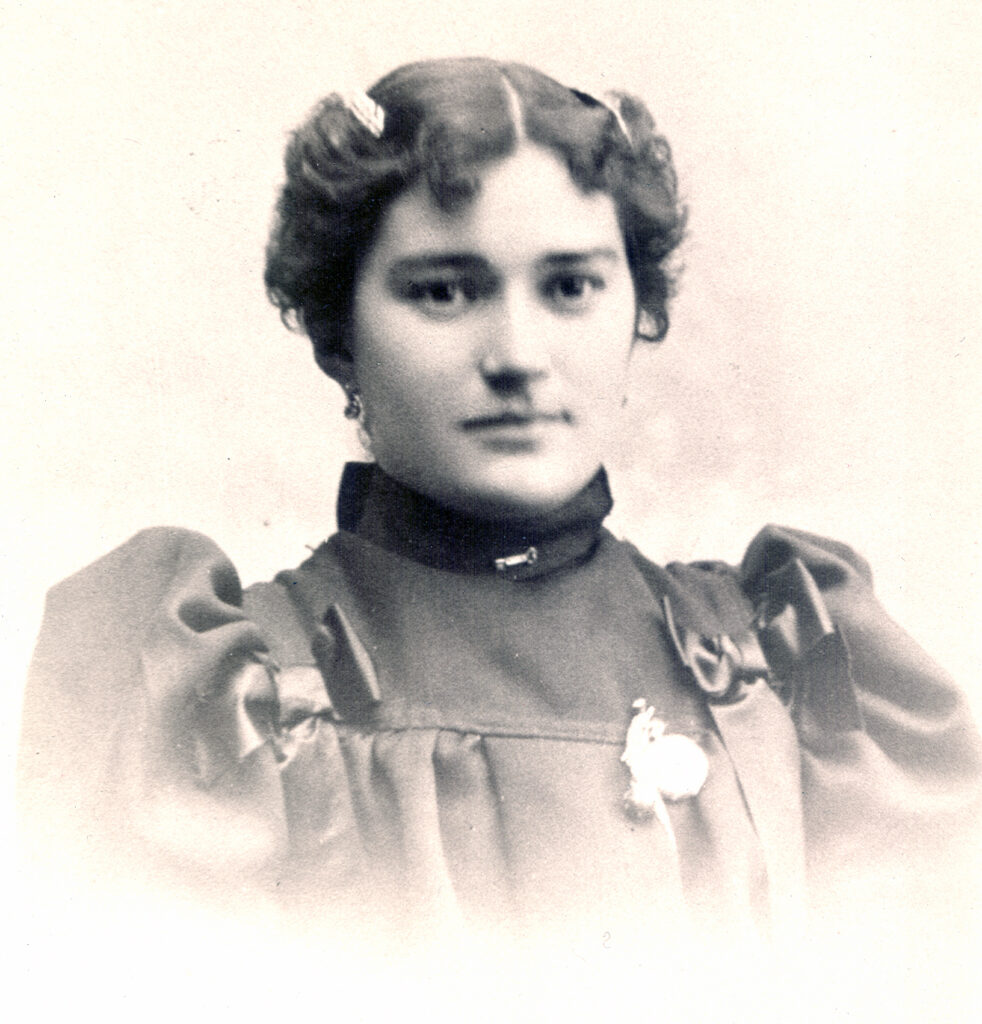
Viola’s mother, Julia, was born to Valentin Clementz and Luzia Lorenz on July 30, 1877 in Highland. They had emigrated from the Swiss village of Praden, Canton Graubünden where they were married on March 12, 1855. Thirteen days later, on March 27, 1855, they left for the United States. They too settled in Highland, Illinois where Valentin worked as a brewer.
Viola’s siblings
Charles and Julia Baer gave birth to eight children prior to Viola. The first two (Adele and Raymond) were born in Highland and the remaining seven in St. Louis.
- Adele (Girlie) Baer, born July 31, 1897
- Raymond Charles Baer, born February 4, 1899
- Elmer Valentine Baer (he was known as Valhis or Valle—pronounced “Valley”), born January 4, 1900
- Homer Baer, born August 26, 1903
- Wilbert George Baer, born January 22, 1906
- Lucille Baer, born February 15, 1909
- Ruth Baer, born March 7, 1912
- Charles Albert Baer, Jr., born July 7, 1914
Viola’s father, Charles, worked as a barber in Highland and St. Louis and later was employed by a chemical company. Times were hard for a barber and laborer with nine children.
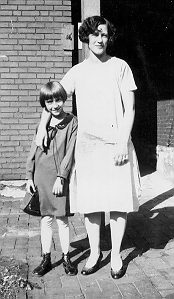
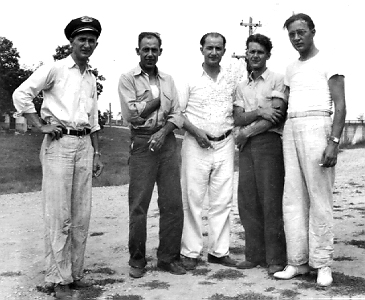
The family had no religious connections and the boys had a wild streak. At one time, several of Viola’s brothers worked for the Pevely Dairy Company. They later bragged of putting the smallest boy through a milk chute at night, stealing dairy products, and then selling them.
As a child, Viola showed promise as a dancer. During grade school, she was selected to take special dance classes at Roosevelt High School. She was one of twelve girls chosen to be part of the Fairy Chorus in a public school production of “Hansel and Gretel.” The pageant was staged at Public School Stadium on North Kingshighway in front of 35,000 people.
Viola lived at 2445A South 18th Street while she attended McKinley High School.
In 1932, at around the age of 16, Viola quit school after completing the tenth grade. She went to work for the Brown Shoe company at 12th and Russell with her lifelong friend Thelma Schroer. Viola worked in the lining department, and Thelma did office work. Viola gave her salary to her parents and received spending money from them.
Thelma, who later married Fred Hemmen, remembered Viola’s parents as “very nice people” who let them have parties in the attic. Thelma and Viola recalled that one year they had a Halloween party and decorated the attic with corn stalks which they later discovered later were full of mice.
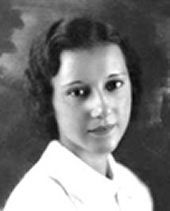
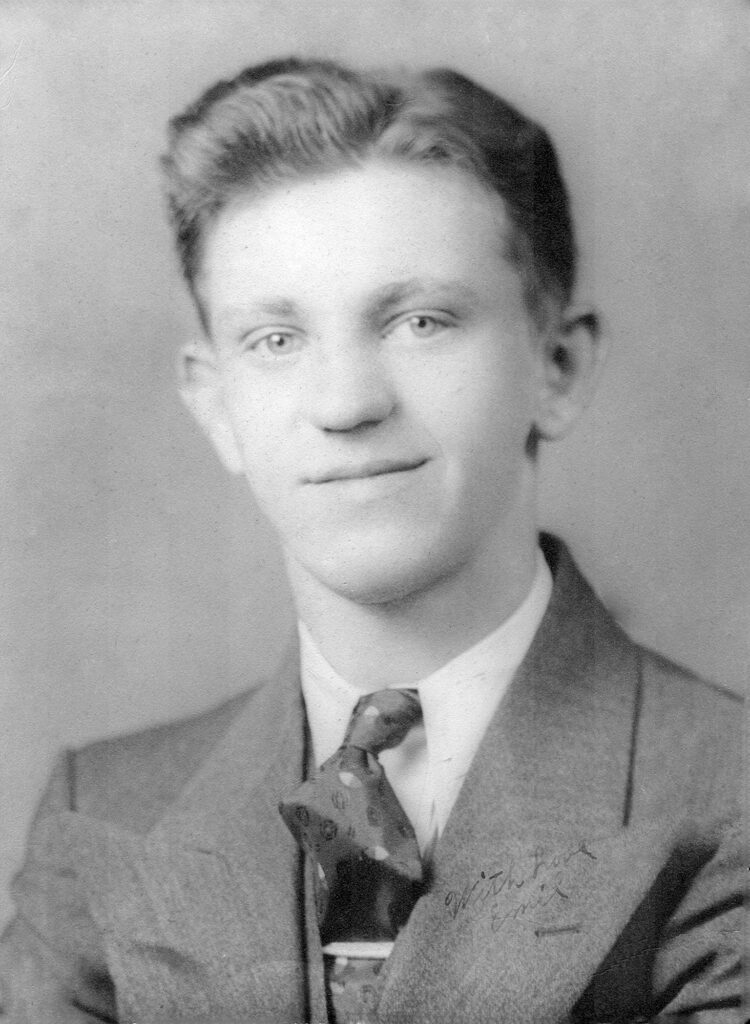
Dances were a favorite activity. Viola and her friends went to dance venues at St. Joseph Church, Sander’s Dance Hall in Down’s Amusement Park, the Arcadia Ballroom, and the Casaloma Ballroom at Broadway and Kingston. They went dancing nearly every Saturday.
It was at one of these dances in 1936 that 19-year-old Viola met Emil Ochonicky for the second time and soon fell in love.
1936 – 1939
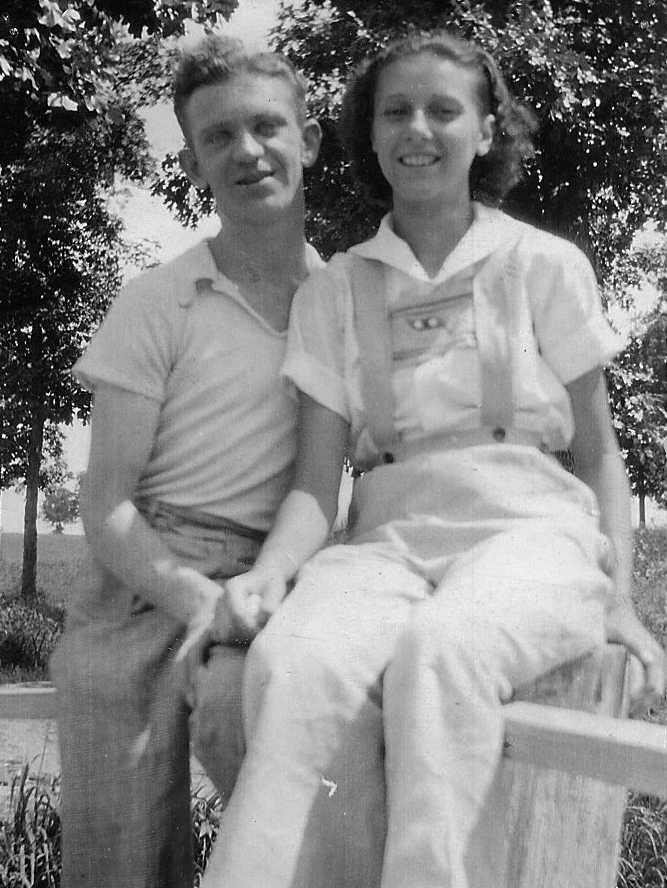
Emil and Viola first met in the summer of 1936 at a picnic. They met again that winter at the Arcadia Ballroom. When they met for a third time at the Casaloma Ballroom, Emil offered to walk Viola home. He had very little money and no car. They later remembered that they would sometimes ride the streetcar until the line ended at some remote location like Creve Coeur, then ride back again for a total of 15 cents.
Emil and Viola became engaged, even though Emil’s parents weren’t very happy about the prospect of a non-Slovak non-Lutheran in the family. Earlier, Viola and her friend Carmen had turned a few heads when they showed up at a Saint Lucas picnic with Emil and his friend, Jerry Solovitz.
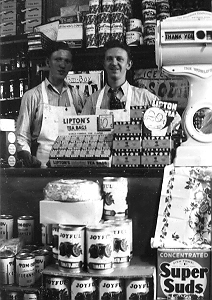
In 1938, Emil’s aunt Anna decided that Emil, now 22 years old, should have his own business. She told Harry Walkenbach that he only needed one grocery and she wanted him to sell the business in her building on Sidney street to Emil. Since Harry was renting the space from her, he didn’t have much choice. Emil bought the grocery business in the spring of 1939 and renamed it “Emil’s Market”.
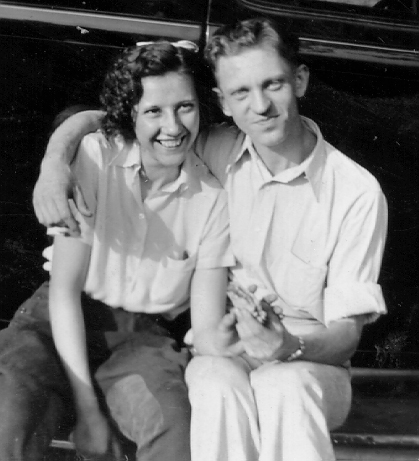
Emil now saved his money to buy a car. He purchased a 1934 Model A Ford for $100. He and Viola are shown in the photo at the right on the running board, with a sandwich in his hand.
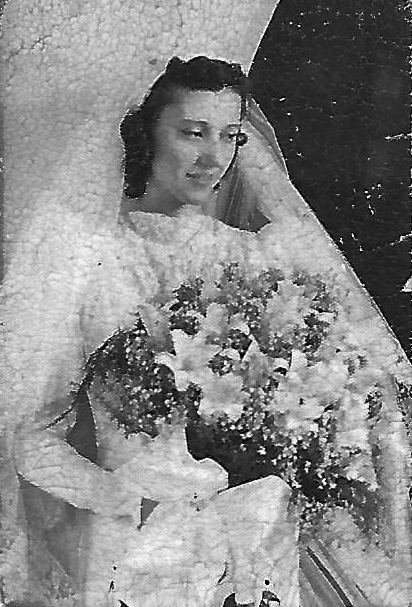
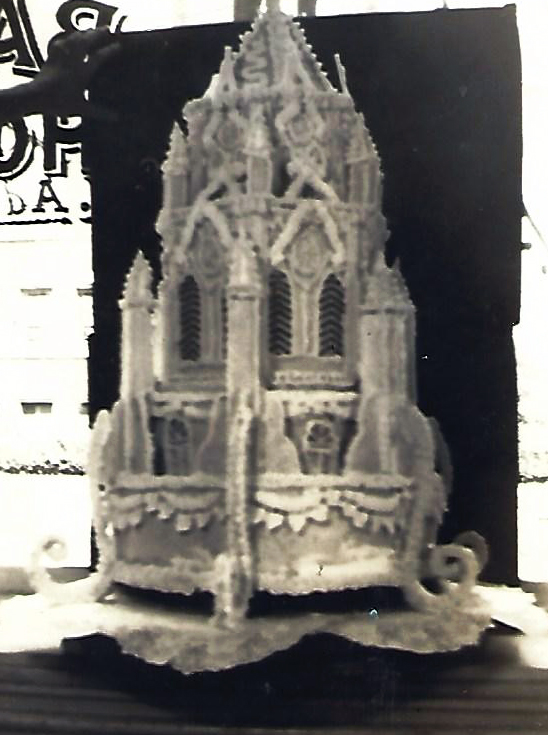
Emil and Viola were married at Saint Lucas Slovak Evangelical Lutheran Church on September 3, 1939. The reception was at Coping House (now the Lemp House). Before the wedding, Viola became a member of the Lutheran church. She was baptized on August 4th and was confirmed nine days later on August 13th. She was baptized by Pastor George Majoros, and her sponsor was her future mother-in-law Eva Ochotnicky. The witnesses were Emil (Ochonicky) and Anna Plasenka.
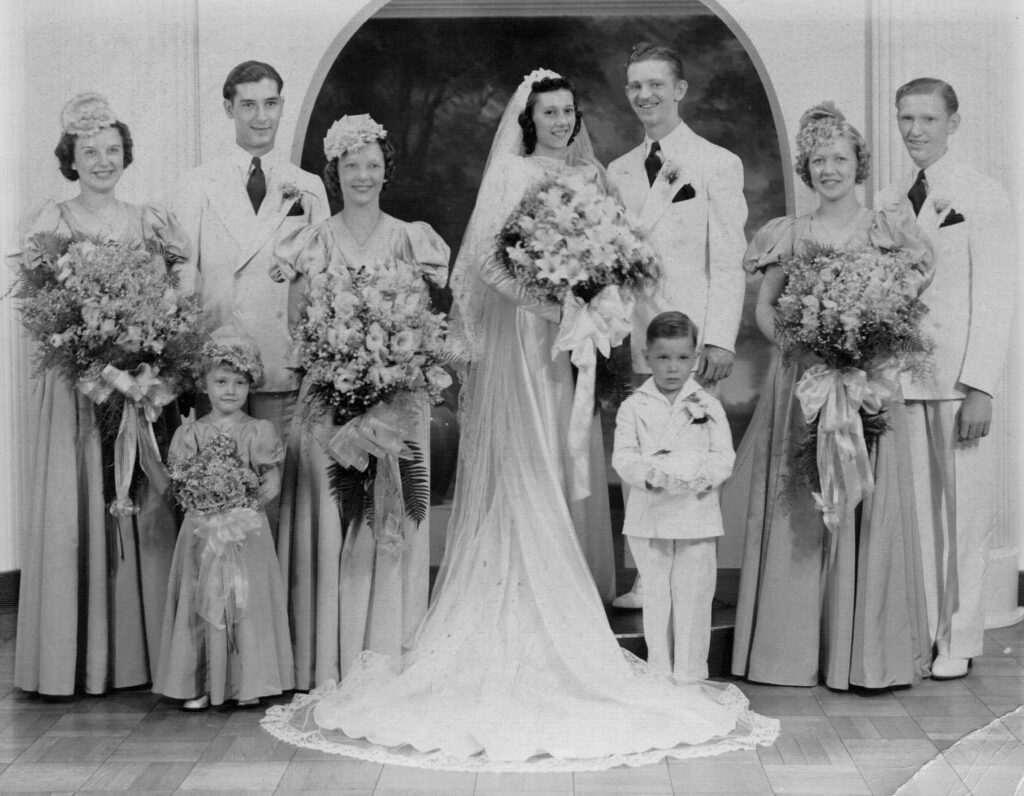
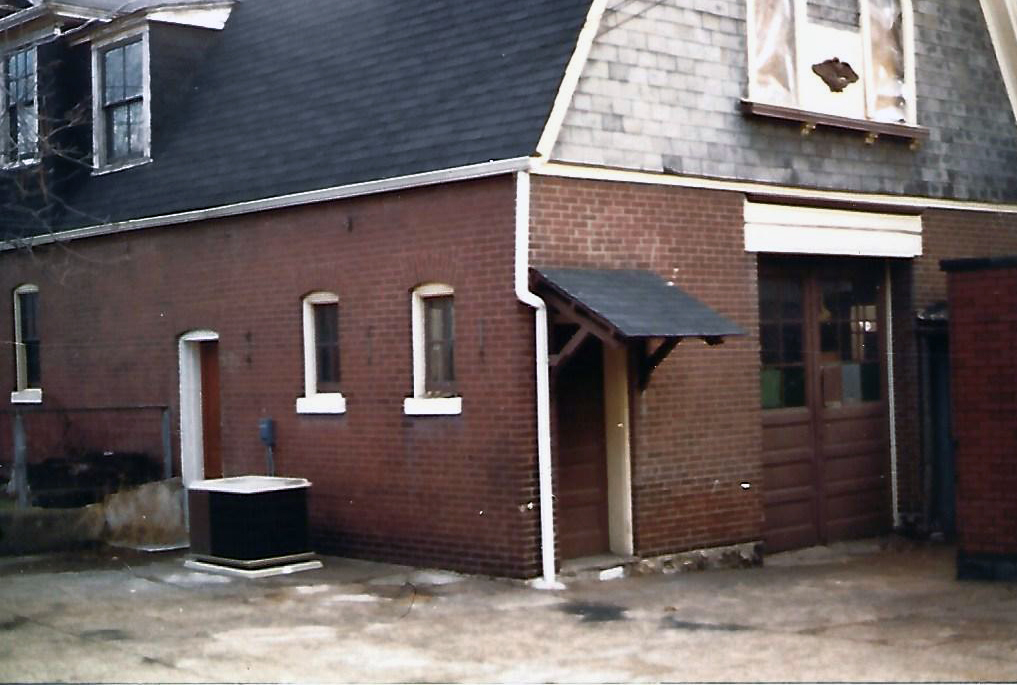
Emil and Viola moved into an apartment in a small building which stood behind the store on Sidney Street.
Family members often worked for Emil in his market, including his younger brother Jerry, and Viola’s older sister Lucille.
An American Legion Hall was located just down the street, and legionnaires full of beer would sometimes relieve themselves beneath the window of Emil’s and Vi’s bedroom. Eventually, they decided to move to the upstairs flat over the store.
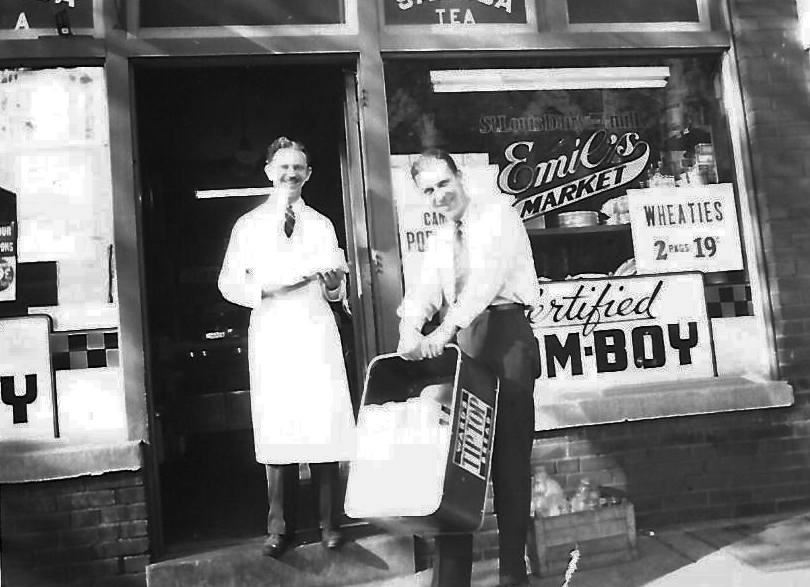
Emil outside Emil’s Market 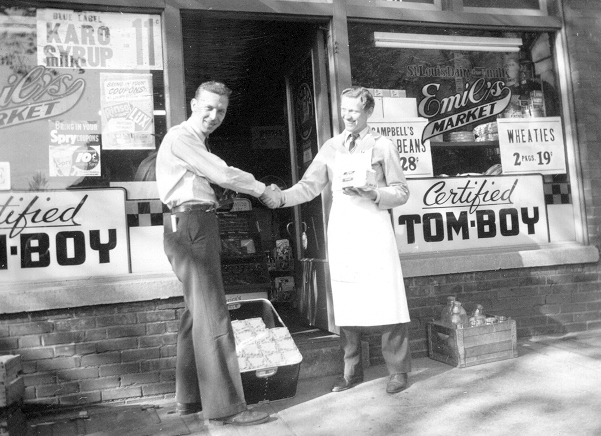
Jerry
1940 – 1949
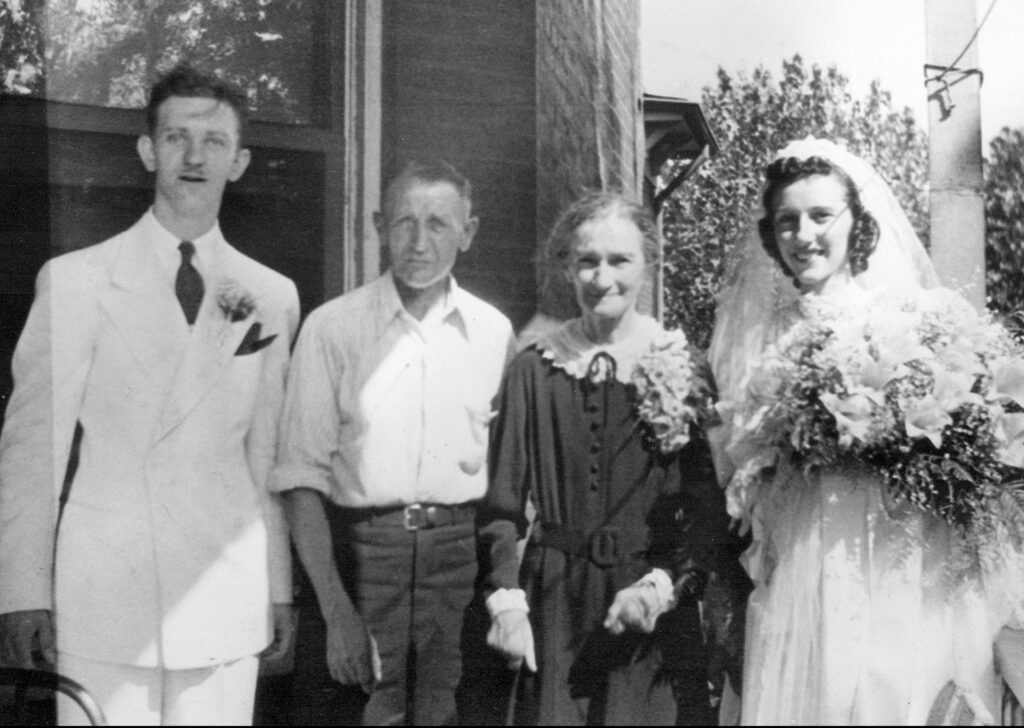
Viola’s father, Charles Baer, died on June 4, 1940, died of cardiac failure and pneumonia at his home at 2417 South 18th Street at Barton. He was buried from St. Agnes Catholic Church, even though he never attended church.
When Charles died, Julia moved in with her daughter Adele (Girlie) and her husband Vincent Heckman. They were renting the flat at 1122A Sidney Street. Viola often helped with her care.
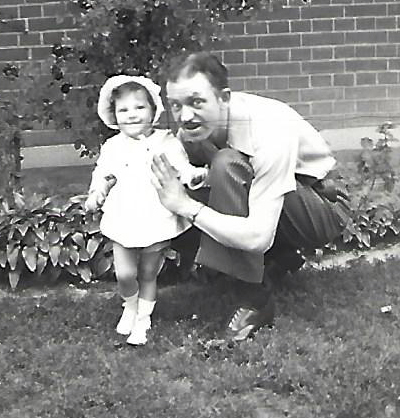
Viola gave birth to her first child, Joyce Elaine Ochonicky, on March 23, 1941 at Lutheran Hospital. At this point they were still living in the apartment behind the store.
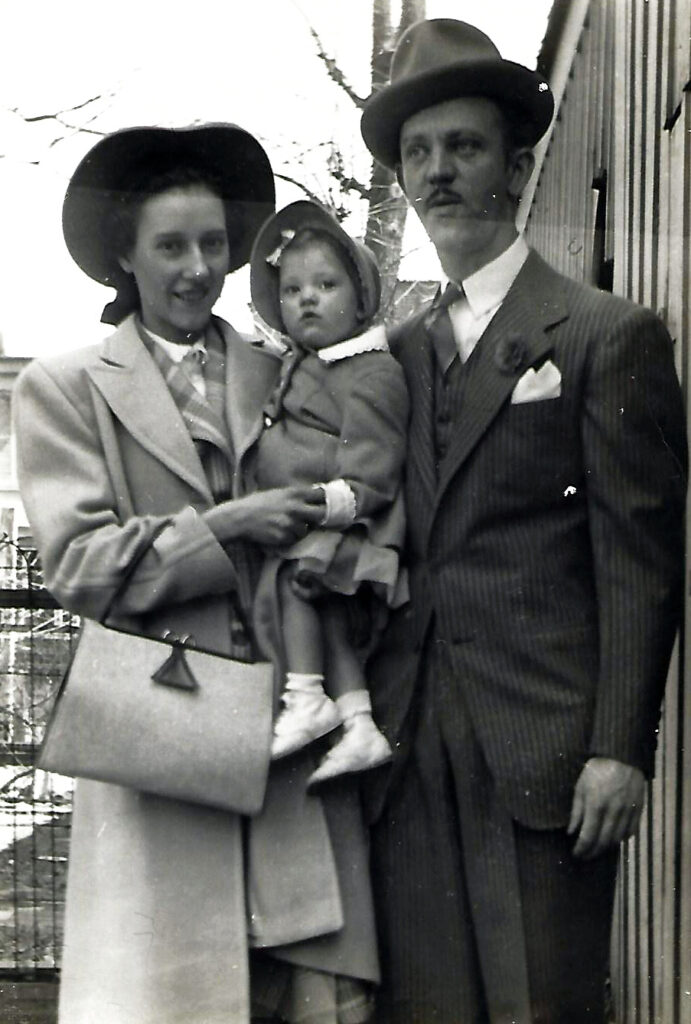
Anna and Martin Plsenka decided to sell their property on Sidney Street. Since a new owner might want to own the grocery business also, they offered the property to Emil and Viola. Emil borrowed $5,000 from his parents to make the down payment. Anna and Martin then moved to another house in the Soulard neighborhood.
Now property owners, Emil and Viola rented out the other apartments, often to family members.
Emil’s father, Stefan Ochodnicky, died of emphysema on August 30, 1941. He was buried in Concordia Cemetery at 4209 Bates in St. Louis.
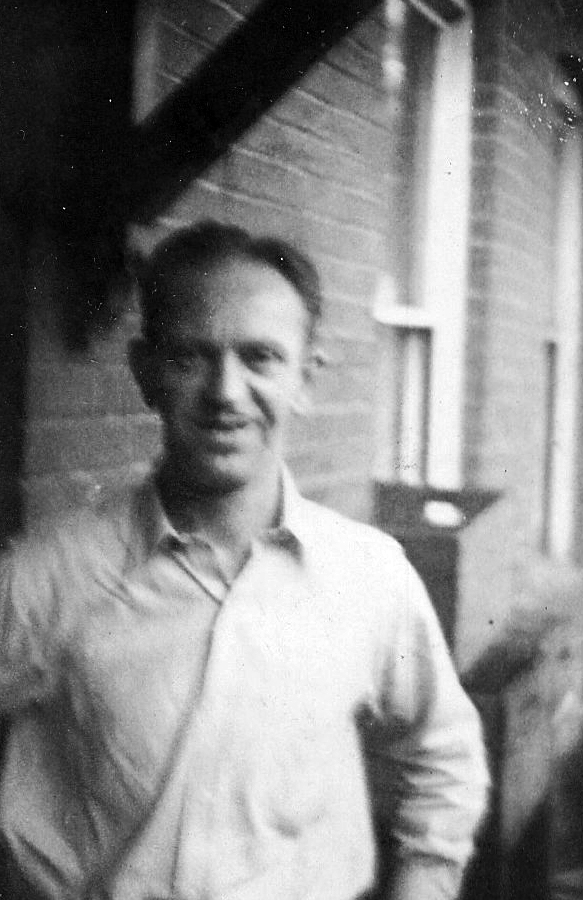
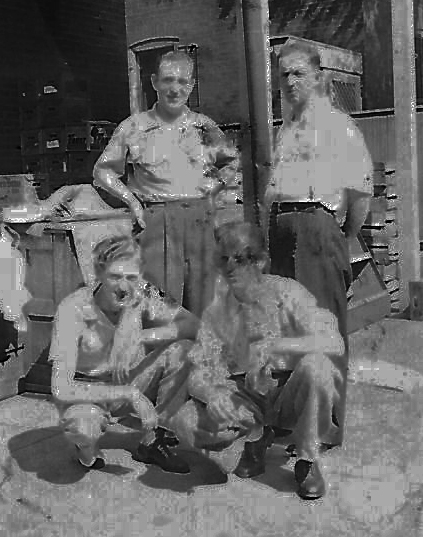
In December 1941, the United States entered World War II. Soon a rationing system was imposed by the government for critical goods including meat and sugar. Emil became frustrated by the system because he could no longer provide scarce meat to his customers. It was then that Emil became an underground butcher. He had contacts with farmers who raised beef and poultry and were willing to sell meat on the “black market”. When he received a phone from a farmer who had just slaughtered a cow, or had some chickens to sell, Emil would drive his pickup truck to a rendevous point late at night and would purchase the illicit goods—a side of beef hanging from a tree in Poplar Bluff or a crate of chickens in some other town. The drive back to the store was often tense. Viola soon learned how to kill and pluck chickens in the back yard. Black market sugar was purchased from a baker in Clayton.
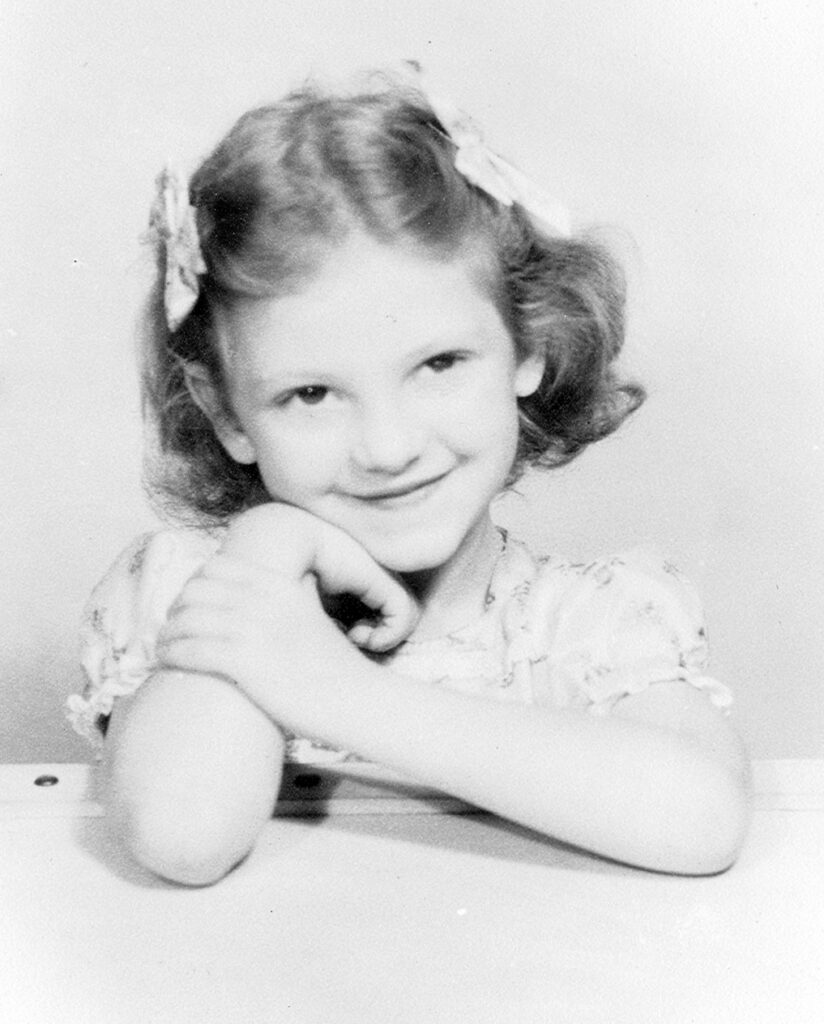
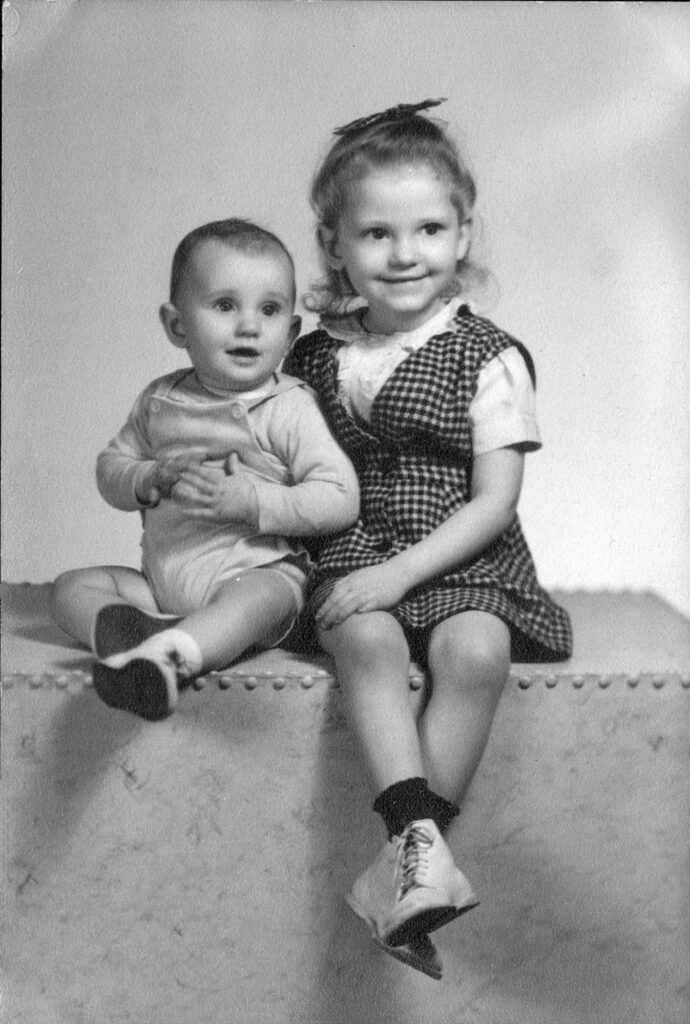
On Father’s Day, June 20, 1943, Emil and Viola gave birth to their second child, Lawrence (Larry) Bruce Ochonicky, was born at Lutheran Hospital. He was the only boy born at the hospital that day.
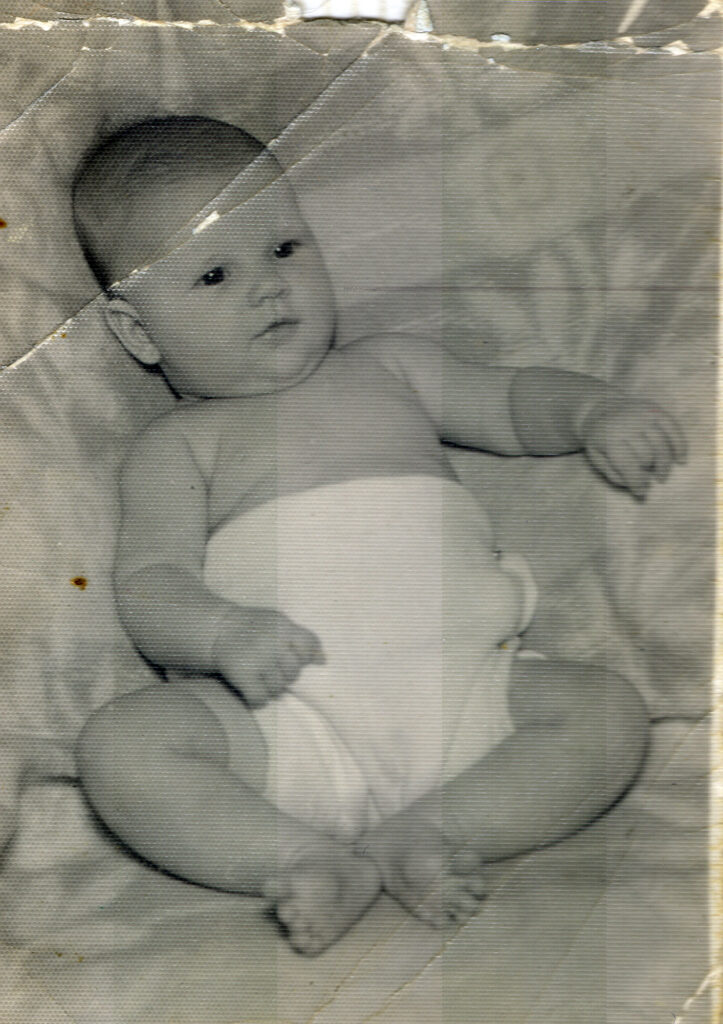
Four years later, and two years after World War II ended , their third child, Jean Eileen Ochonicky, was born on May 29, 1947 at Lutheran Hospital .
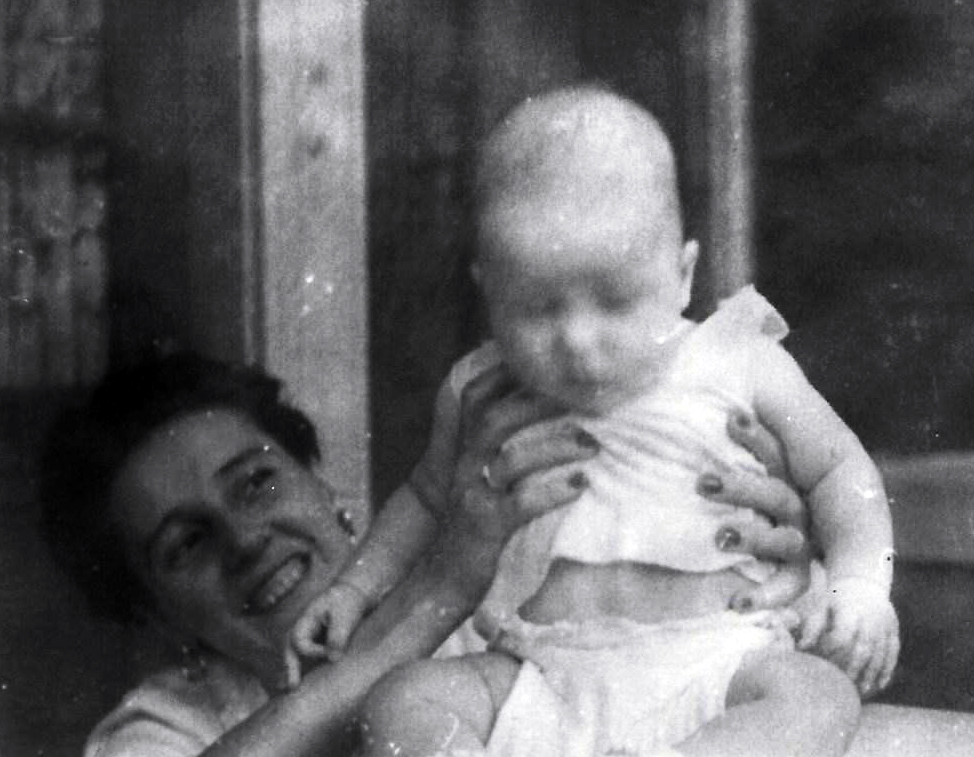
Viola with Jean in 1947 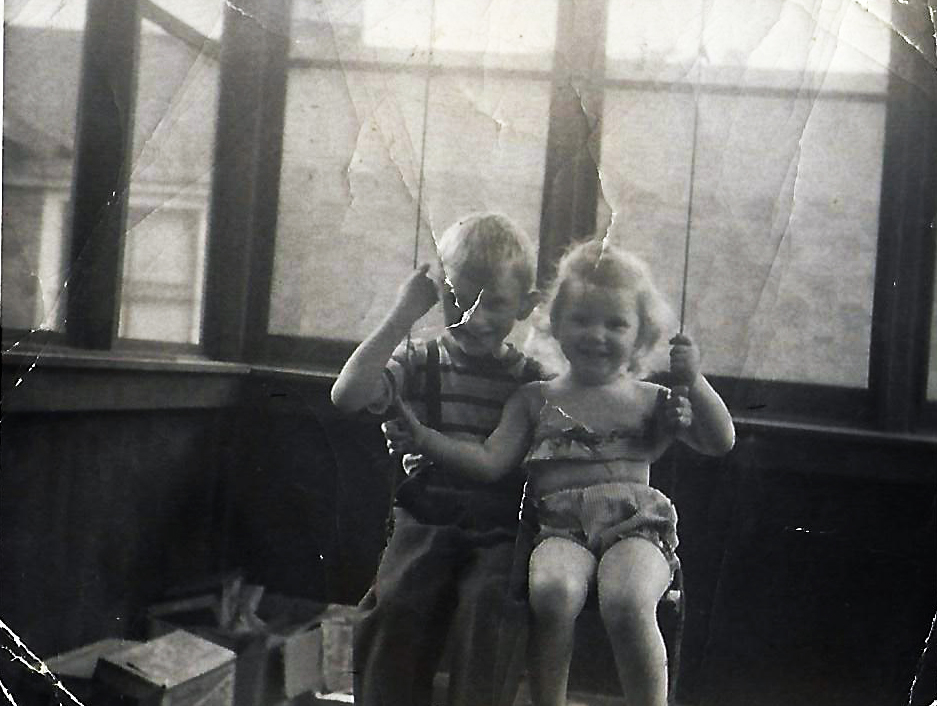
Larry and Jean in 1948 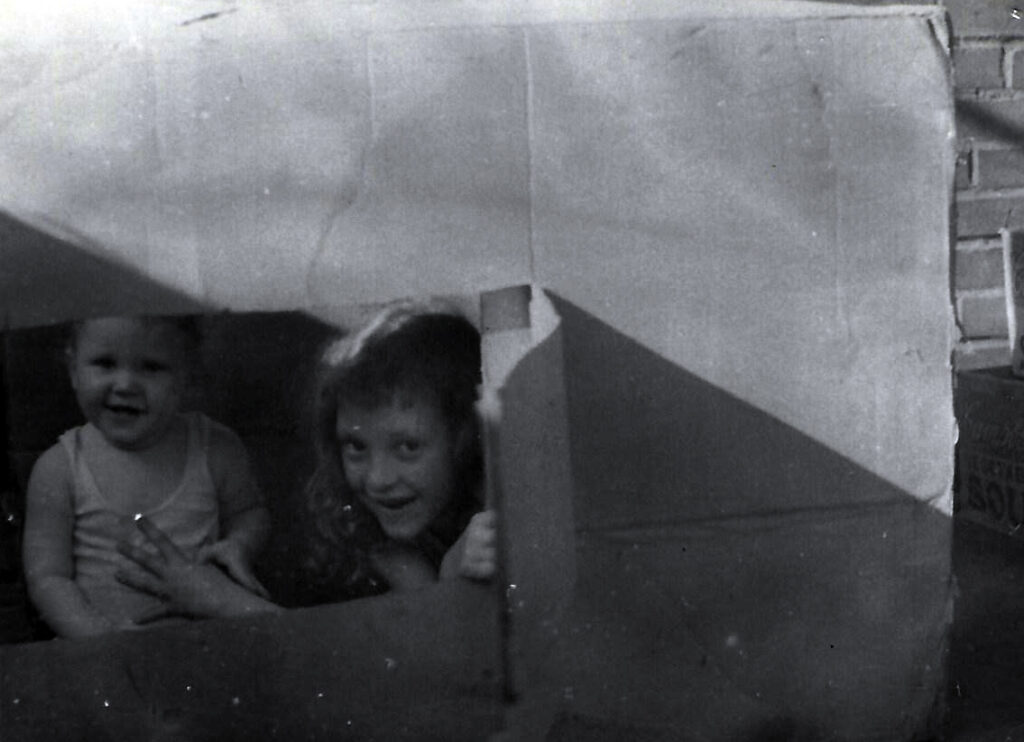
Jean and Joyce in 1948 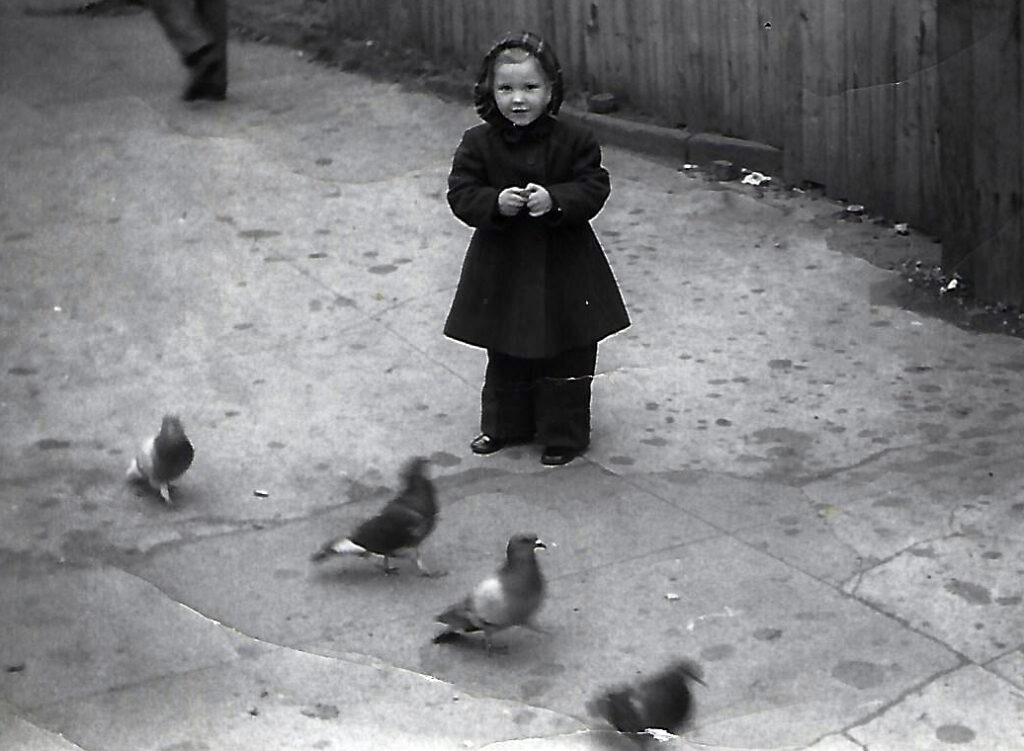
Jean in New York in 1949 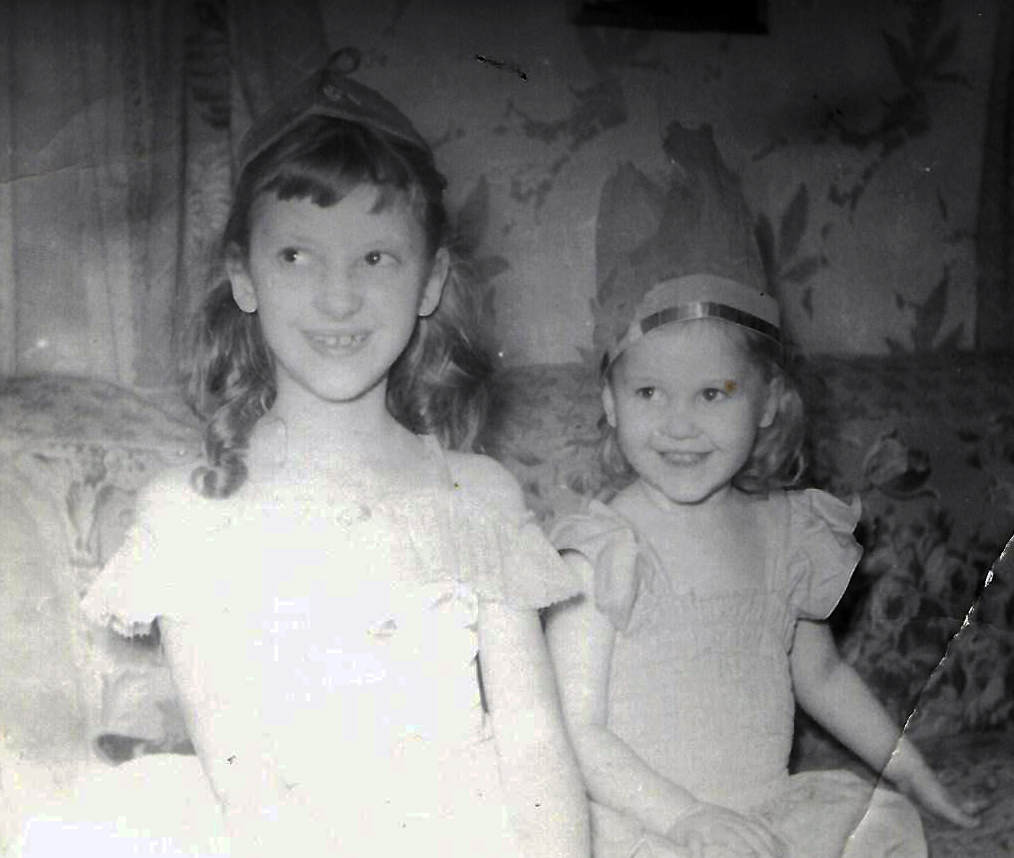
Joyce and Jean in 1949 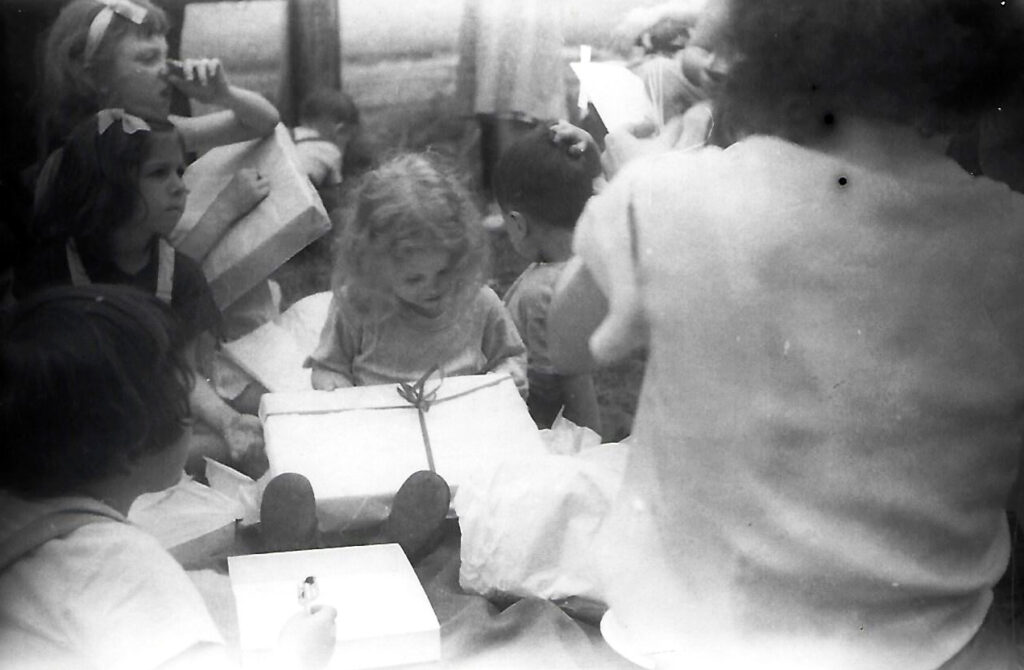
Jean’s birthday in 1949
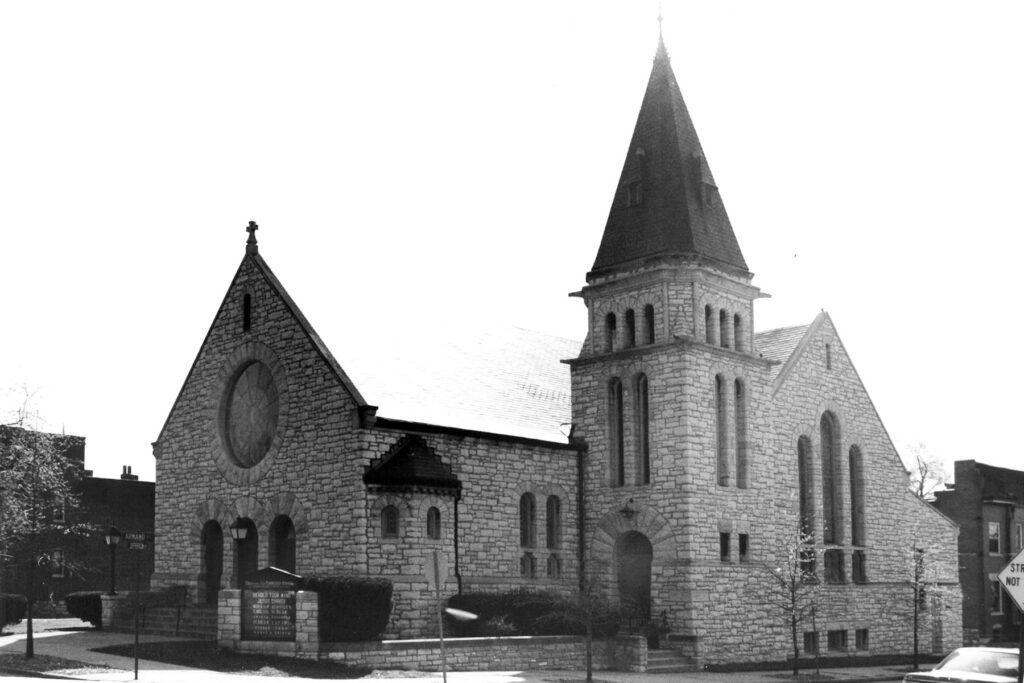
Viola wanted the older children enrolled in a parochial school. Joyce and Larry attended the grade school at Emmaus Lutheran Church. Emil drove them to and from the school every day. The Emmaus congregation had been founded as the “Jefferson Avenue Mission” of Trinity Lutheran Church in 1889. The Emmaus church building, constructed in 1902, stood at at Jefferson Avenue and Armand Place. A large school and parish building at 2617 Shenandoah Avenue was completed in 1926. It contained rooms for an eight grade school and an auditorium-gymnasium seating 1,000 people.
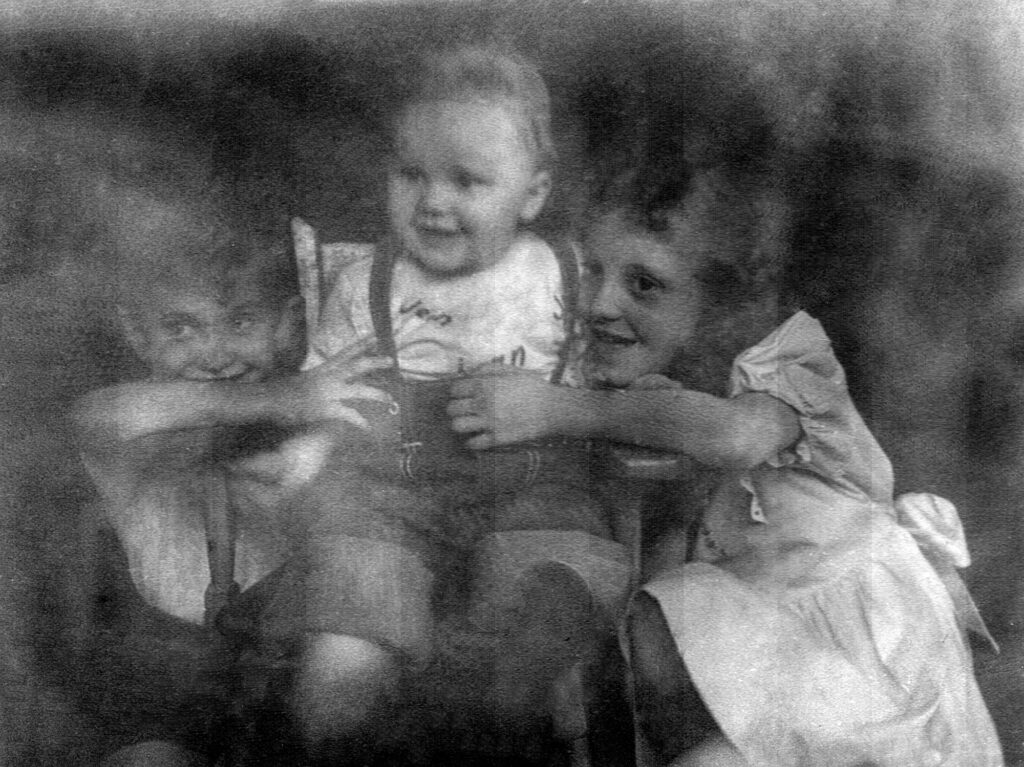
All three siblings shared a large bedroom in their flat at 1120A Sidney above the market. A screened-in porch was attached to their bedroom, where they spent most of their time playing during the warm weather, because Viola thought the other children in the neighborhood were too rough for them to play with. In addition, the back yard of the house on Sidney Street was paved with concrete.
In order to give the children a better play experience during the summer months, Emil and Viola rented a rustic cabin on the Meramec River from a farmer who owned the property. The so-called “club house” was soon christened “Ochy’s Fun House”. The sole indoor plumbing consisted of a hand pump at the kitchen sink. The toilet was an outhouse by day and a bucket by night.
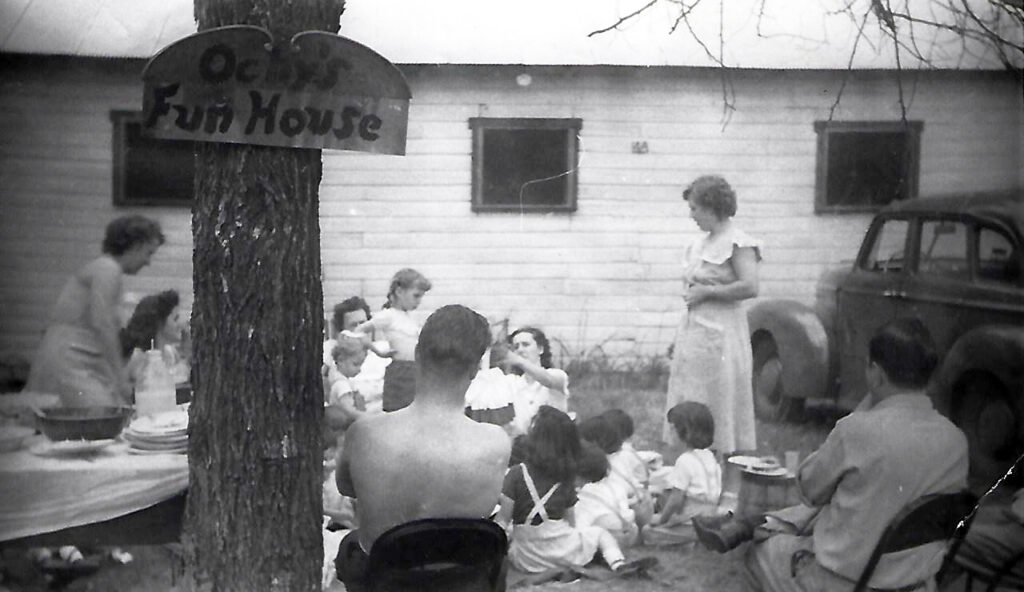
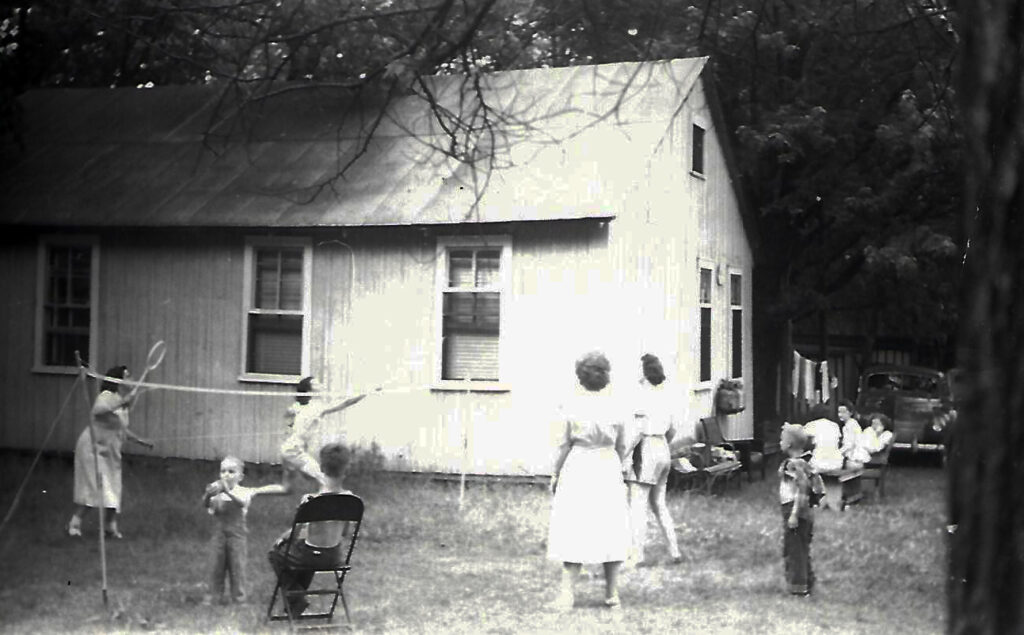
Viola and the children would stay at the cabin during the week and Emil would drive out to join them on weekends. Friends Carmen and Jerry Solovitz rented a house nearby. Thelma and Fred Hemmen often visited with their daughters Carolyn and Marilyn, as did George and Dorothy Solovic and their children George Jr., Barbara, and Gary.
The Joyce, Larry and Jean all had fond memories of summers at the club house. They would take turns giving one another rides along the dirt road that led to the nearby farmer’s house, using an old baby buggy. There was also a tree swing at the cottage next door, where they could swing out high over the road.
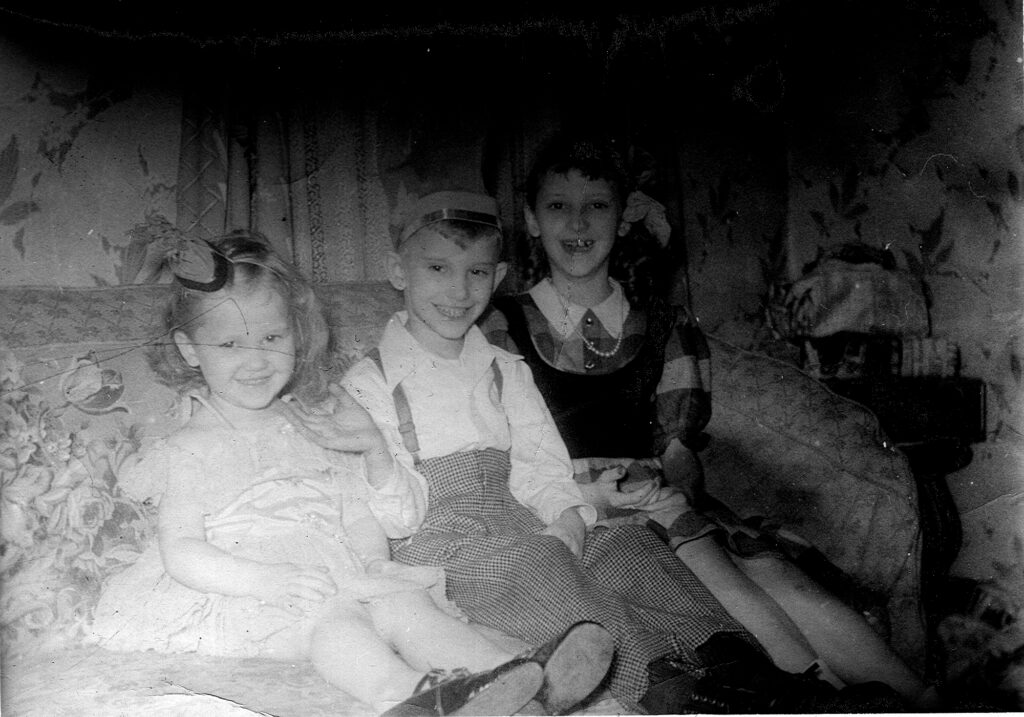
When the children were young, Joyce, Larry and Jean bought a chicken at a dimestore on Cherokee Street. When they brought the chicken home, their Aunt Girlie predicted that Viola was going to “kill” them. Charlie, as they named the chicken, soon turned out to be a hen. She lived on the back porch of their flat. In the Summer, they would take Charlie with them to the clubhouse and caught grasshoppers for her to eat. When she became too big to keep in their flat, she was given to the farmer who owned the clubhouse. Once there, Charlie would not remain with the other chickens, but instead preferred to follow the farmer’s wife around,. Eventually Charlie ended up being Sunday dinner for the farmer’s family. The farmer’s wife refused to eat any of Charlie’s remains.
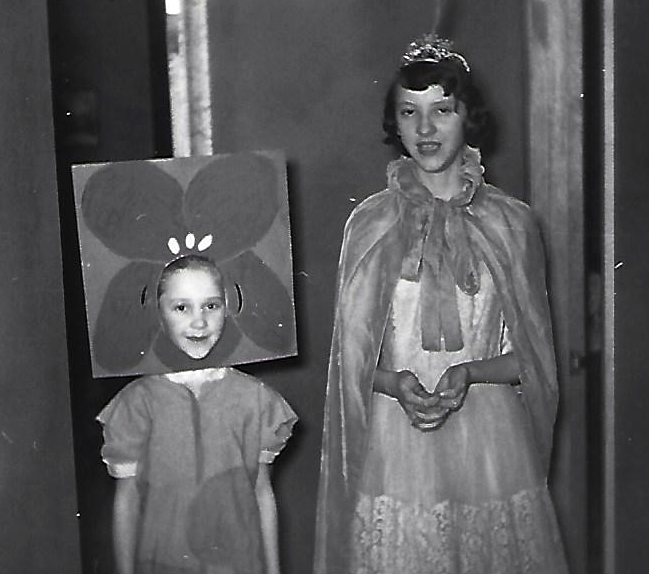
Jean remembers going across the hall to visit her Aunt Girlie and Uncle Vincent at their flat on Sidney Street, especially when the smell of fresh-baked bread was in the air. Her Aunt Girlie always warned that they would get a stomach ache eating that bread before it cooled, but Jean couldn’t remember her ever actually stopping them from eating it.
Every year on the night before St. Nicholas’ Day (December 6), Joyce, Larry and Jean would hang nylon stockings on a china cabinet in Aunt Girlie’s kitchen. The next morning they would be filled with goodies and the stockings tied in tight knots. Their Aunt Girlie always threatened the children with finding coal in their stockings if they were not good. This was a real possiblity, since an adequate supply was located in the basement for the coal-fired furnace.
Emil eventually paid back the $5,000 he owed his parents. He then decided to invest in real estate. He bought a warehouse on 12th and Barden and leased it to the Lockhart Moving Company. He figured that as he paid off one property he’d buy another, and keep on going.
1950 – 1959

On July 5, 1950, Viola’s mother, Julia Baer, died at home in Adele and Vincent Heckman’s flat at 1122A Sidney Street. She was buried on July 8th in Resurrection Cemetery
On October 27, 1950, Emil’s mother, Eva Ochodnicky, died at home at 2927 Minnesota Avenue where she was living with Emil’s younger brother Jerry.
Emil remembered that before her death, his mother was seriously ill and urgently needed a doctor. In those days no one had health insurance. Emil contacted a doctor, Leo P. Young, who examined Eva and determined that surgery was necessary. In the operating room, he discovered cancer in the colon that was inoperable. He performed a colostomy, but Eva soon died. Dr. Young sent Emil a bill for $500. Emil called the doctor and complained that they had never discussed fees and that he would never have agreed to an amount that large without consulting his brothers. He knew he would be in hot water with them for committing to surgery without a prior cost estimate and he knew thay would probably be unwilling to contribute the full amount. The surgeon reluctantly agreed to lower his charges to between $200 and $300.
Eva Ochodnicky was buried in Concordia Cemetery on October 30, 1950.
In 1950, when Joyce was in third grade and Larry in first grade, Emmaus Lutheran Church raised the tuition at their school for non-members. Emil and Viola contacted St. John’s Lutheran School at Morganford and Chippewa and were told they could enroll their children there and could “pay whatever you can”. They quickly transferred the children to St. John’s. All three children attended the school there through the eighth grade.
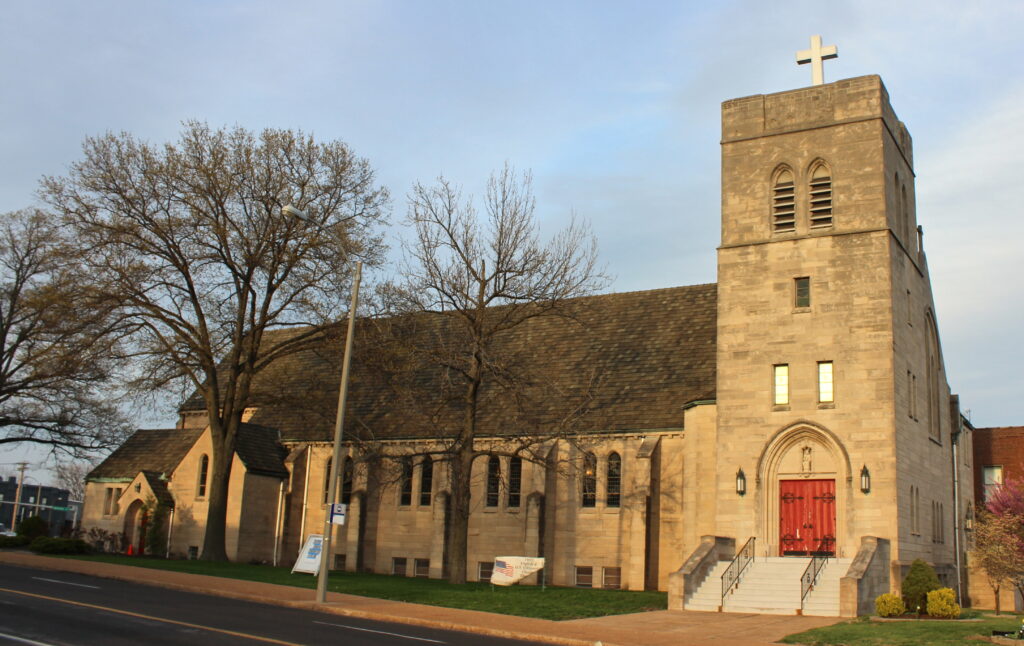
Because of transportation, Jean attended the school for a full day starting in Kindergarten, even though her classes were held only in the afternoon. Mornings were spent wandering around the school, visiting either her sister’s or her brother’s classroom whenever she liked.
While attending school at St. John’s, Larry worked one of his first jobs—setting pins in the bowling alley in the basement of the church. He also started helping at his father’s store, delivering groceries in the neighborhood, using a child’s wagon. Later, he continued to deliver groceries on a bike. Emil told his customers not to tip Larry, but some did anyway, and he quietly kept the tips. On one delivery, an older woman came to the door topless, something Larry never mentioned to his father.
Viola still wanted a better environment for the children than they had on Sidney Street and persuaded Emil that they needed to find a house that could provide a real back yard with grass.
In 1954, Emil sold the building on Sidney Street to Viola’s brother Raymond Baer and her brother-in-law Vincent Heckman. He also sold the warehouse that he owned at 12th and Barden. Emil and Viola took the proceeds and built a new home at 6429 Myrlette Court.
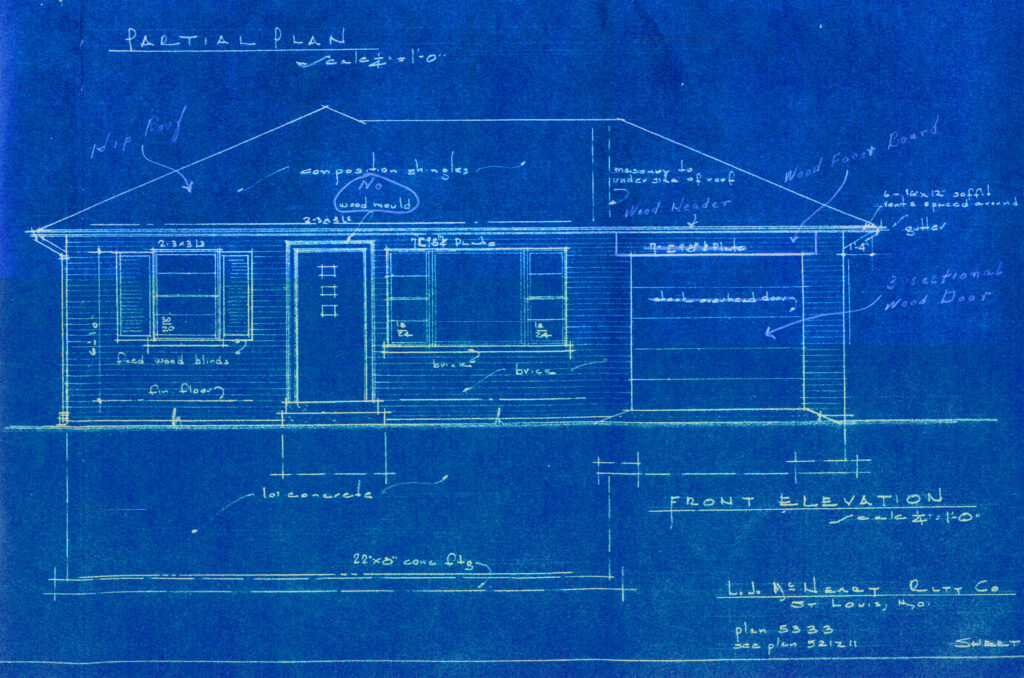
Building a new house was very exciting for the children, and many trips were made to the site to see the progress. The backyard was bigger than anything they could have imagined.
After moving to Myrlette Court, the children were finally allowed to play outside and could go anywhere within shouting distance and only had to be inside by the time the street lights went on in the evening. Summers were now spent in the yard, the neighborhood, and the adjacent cemetery which backed the property.
The Old St. Marcus Cemetery had been created at 6638 Gravois in 1856 by the Deutsche Evangelische St. Markus Gemeinde (St. Marcus German Evangelical Congregation), located from 1848 to 1915 in the Soulard neighborhood. Only a small fraction of the cemetery’s graves (2,290 of about 19,5000 total) were maintained through perpetual care, leading to neglect and dereliction. By the 1940s the cemetery trustees had become dysfunctional and the property became overgrown. Burials were prohibited by the city after 1960. The cemetery property was sold to the city in 1977 and afterwards turned into St. Marcus Park, a walking park. Although many of the original grave markers remain, most have been destroyed through vandalism or have been moved. Money from the cemetery’s sale was used to move graves to New St. Marcus Cemetery, which had been established at 7901 Gravois near the River des Peres in 1896. All graves there are under perpetual care.

Within three years, Saint Lucas Slovak Evangelical Lutheran Church had relocated to a new location on Morganford Road not far from the Ochonicky house. Congregational membership had dwindled during and after World War II, as many members left the downtown area for outlying regions and suburbs. The day school closed in 1947. In 1953, the congregation purchased 2.37 acres of property at Morganford and Blow. A building program was begun on May 29, 1955 to celebrate the 50th anniversary of the congregation’s founding on January 29, 1905. The present church and educational wing at 7100 Morganford Road was dedicated on July 27, 1958, at a cost of $300,000.
Over his working life, Emil tried many business ventures. He owned a used car lot at 7th and Sidney. He delivered cookies for the Thompson Biscuit Company. He owned a dry cleaning business. (Adele Heckman worked for him there.) Eventually, Emil and his brother Jerry bought a grocery store across the river in East Saint Louis which they named the “J&E Market”. Eventually, after Jerry left the partnership, Emil sold the business and worked as a meat cutter for various other markets until his “retirement”.
Viola also worked for many years, helping out at the J&E Market and later working as a salesclerk at the downtown Famous-Barr department store in the Women’s Junior department. She retired from Famous in 1980.
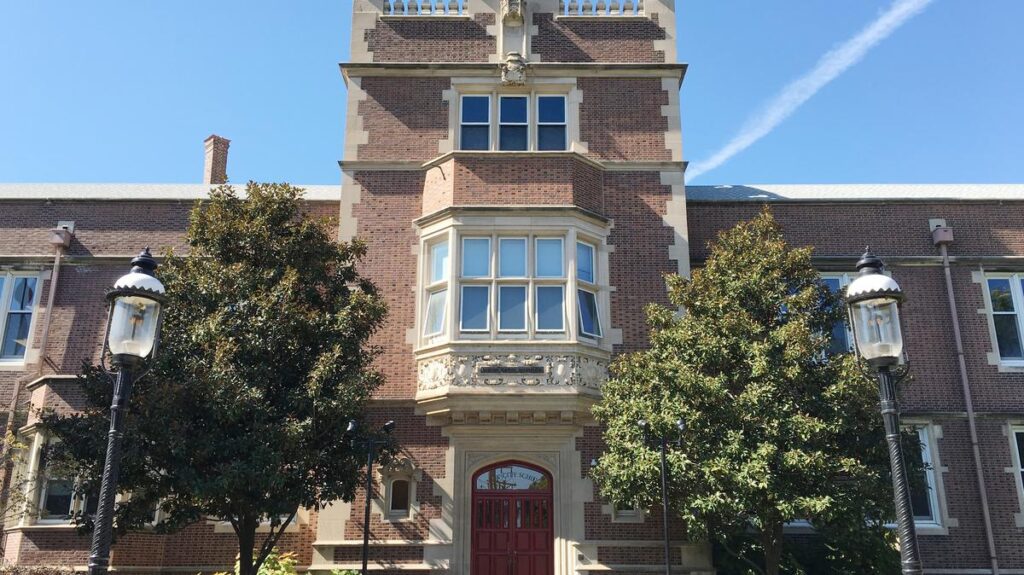
Joyce attended Lutheran Central High School in St. Louis’ Central West End neighborhood. The school had been founded in 1946 in the old Mary Institute building at the corner of Lake and Waterman Avenues. The Mary Institute for girls had been established in 1859 by William Greenleef Eliot, the founder and chancellor of Washington University. The building at Lake and Waterman, constructed in 1901, was its third location. Mary Institute relocated to Ladue in 1931. The building is now the site of the New City School, founded in 1969.
After graduation, Joyce enrolled in the Lutheran Hospital School of Nursing.
1960 – 1969
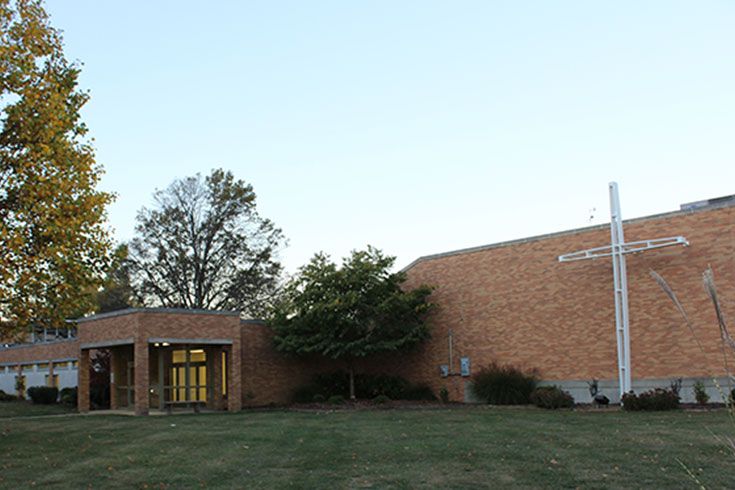
In the fall of 1957, a new Lutheran high school—Lutheran High School South—had opened its doors at 9515 Tesson Ferry Road. Larry was part of the first graduating class in 1961. After high school, Larry attended Harris Junior College, then the University of Missouri at Columbia, and eventually at Washington University night school, where he graduated in January 1970 with a degree in Business Administration.
On June 16, 1962, Joyce Ochonicky married William (Bill) Sam Kolnik. Bill was born on October 27, 1930 in St. Louis to Samuel and Elena (Miklas) Kolnik.
Bill’s father Samuel was born on September 24, 1901 in Kostelne, Slovakia. His mother Elena was born in St. Louis on July 20, 1908. In 1913, when she was five years old, her family left the United States and moved to Kostelne.
Elena and Samuel were married in Kostelne on April 27, 1926, when she was 17 and he was 25. They lived with Samuel’s family, which turned out to be not a good situation. An aunt of Samuel’s was unkind to Elena, so at age 19, just one year after their marriage, Elena moved back to St. Louis. She sailed from Bremen, Germany to New York on the S.S. George Washington, leaving on October 26, 1927 and arriving on November 4th.
Elena worked for two years, saving money so that she could send for Samuel. In 1929, he arrived in St. Louis. Like his father, Ján Kolnik, Samuel was a tailor, but because of the depression, it was difficult for him to find work. Bill was born one year later.
Joyce and Bill Kolnik had four children, three of whom survived.
- William (Wil) Samuel Kolnik, born March 28, 1963
- Christine (Chris) Anne Kolnik, born Oct 14, 1964
- David John Kolnik, born January 14, 1968
Joyce and Bill also had a daughter, Kathleen, who died at birth. (1970)
In 1965, when Larry Ochonicky was 22, he began to be attracted to Claudia Solovitz, a 16-year-old member of St. Lucas Church. Larry’s father Emil and and Claudia’s father, also named Emil, had been friends since childhood and were life-long members of the church.
Claudia Solovitz was born on January 17, 1950, the oldest of twin girls born to Emil and Evangeline (Vange) Solovitz. Claudia’s older brother Steve was born on November 19, 1947.
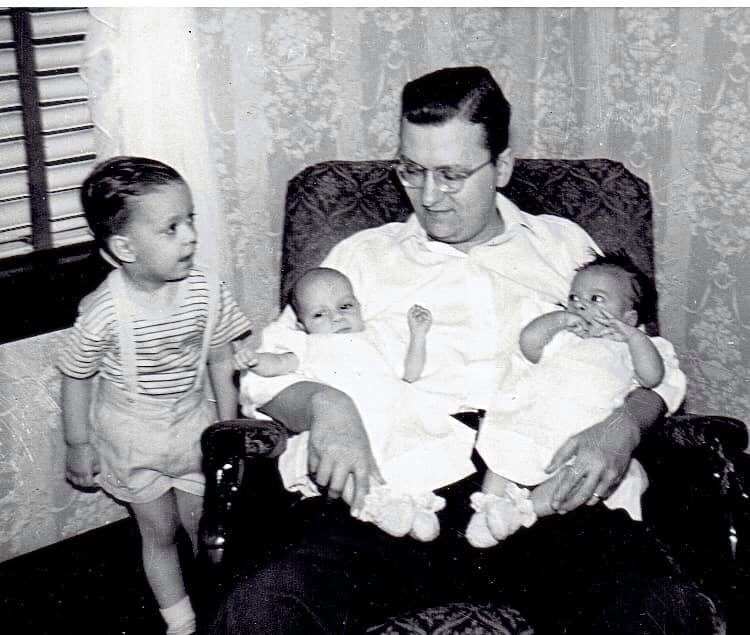
Claudia’s parents rented one of the flats in Emil Ochonicky’s building at 12th and Sidney when Claudia and Susan were babies. In December of 1950, when Claudia was eleven months old, they moved to a home which they purchased on Blow Street in South St. Louis.
Claudia’s father, Emil, was the third and youngest son of Adam and Katherine Solovitz, both orphans from Slovakia, who came to America in their teens. Claudia’s mother, Evangeline, was the seventh of nine children born to Michael and Mary Farko. Her grandparents were immigrants from Slovakia, who originally settled in Pennsylvania, and then moved to Streator, Illinois, where the Owens Glass Factory offered employment.
Emil Solovitz met Evangeline Farko at a Slovak Synod church convention which was held in in Streator, Illinois. They married after the end of World War II on August 25, 1945. Emil worked for most of his life at the Monsanto Chemical Company in South St. Louis.
Claudia Solovitz attended southside St. Louis public schools (Gardenville, Buder and Cleveland High School) with her sister and brother. After graduation, she attended the University of Missouri for one year, and then studied at a Medical Assistant School, where she was trained as a physician’s assistant.
Larry and Claudia were married on January. 25, 1969 at St. Lucas Evangelical Lutheran Church. They honeymooned in Chicago, then returned to a small house which they rented on Nagel. They lived there 1971. At the time, Larry was working at the Laclede Gas Company. where he first worked in the lab, then moved to the accounting department downtown.
Jean Ochonicky attended school at St. John’s through the eighth grade, then went on to Lutheran High School South. She graduated from there in 1965, and attended the University of Missouri at Columbia for one year.
She then got a job working at the main Post Office in downtown St. Louis, working the afternoon shift. After spending about a year feeling like she spent all of her time either working or sleeping, she left the Post Office and took a job working for the Assistant Administrator at Children’s Hospital on Kingshighway Boulevard. She worked at this job until moving to Detroit in July, 1969.
Jean met Kurt Struckmeyer at St. Lucas Church where both were members of the church’s Luther League. Jean and Kurt were both dating other people at the church (Jerry Vajda and Lynn Hettenhausen). When those relationships broke up at about the same time shortly before they graduated from high school, they began to date until they were married on August 24, 1968.
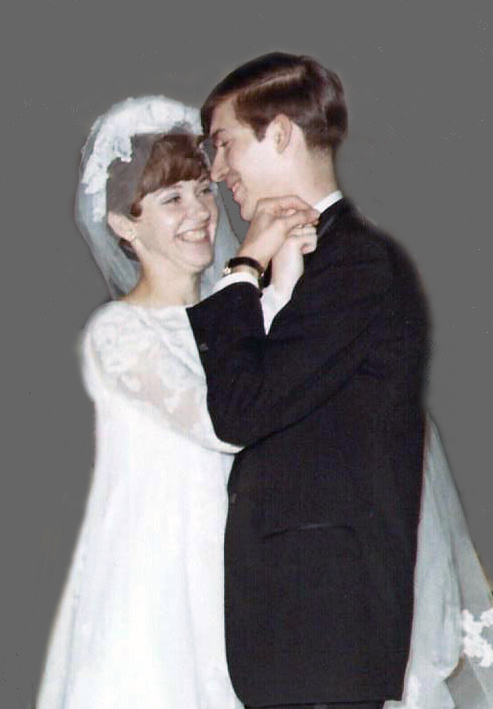
At the time of their marriage, Kurt was entering his senior year as an art student at Washington University. They honeymooned at the Hendrix Haven “resort” in the Missouri Ozarks. While there, they had to park their 1963 VW Beetle at the top of a hill because the starter motor was malfunctioning. They would start the car by Kurt pushing it down the hill and Jean popping the clutch while it was moving.
Their first home was a townhouse rental apartment at 219 University Court in the newly built Laclede Town in downtown St. Louis where they lived until July of 1969.
During Kurt’s senior year at Washington University, recruiters from the General Motors Design Staff visited the art school, looking for sculptors to work as automotive clay modelers at GM’s Technical Center campus in Warren, Michigan, a suburb of Detroit. Having no other prospects, Kurt submitted a portfolio of his art work and got an immediate telegram inviting him to an interview. GM flew Kurt and Jean to Detroit and after being interviewed, Kurt was offered a position as a Junior Modeler, which he accepted.
In July of 1969, Jean and Kurt left for Detroit, thinking they would be in Michigan one or two years while Kurt got a master’s degree in Art History at Wayne State University and eventually got a job teaching at a college. Instead, they stayed for 36 years.
Their first home in Detroit was a small duplex on Moross, on Detroit’s east side, where they moved with their dog, Zeke. Soon, Jean found a job with the Visiting Nurse Association, doing office work and updating patient orders. She worked there from August of 1969 until May of 1971, when she quit because she was pregnant with their first child, Amy.
1970 – 1979
Larry and Claudia Ochonicky had three children, all born in the 1970s:
- Michael Lawrence Ochonicky, born on July 15, 1970
- Melisa Susan Ochonicky, born on September 15, 1972
- Laura Elizabeth Ochonicky, born on April 9, 1978
When Michael was born, Claudia became a full-time mother, a role that she continued until their children were older, and she returned to work as a physician’s assistant and then bookkeeper and computer operator.
In 1971, Larry and Claudia built a home on Friar Tuck and moved there with one-year-old Michael. They lived in that home for five years. In 1976, the four of them moved to the home they built on Bloomingdale Drive. Michael was six years old at the time, and Melisa was almost four.
Jean and Kurt Struckmeyer had two daughters born in the 1970s:
- Amy Rebecca Struckmeyer, born on June 2, 1971 at South Macomb Hospital, in Warren, Michigan
- Sara Elizabeth Struckmeyer, born August 1, 1976, at South Macomb Hospital
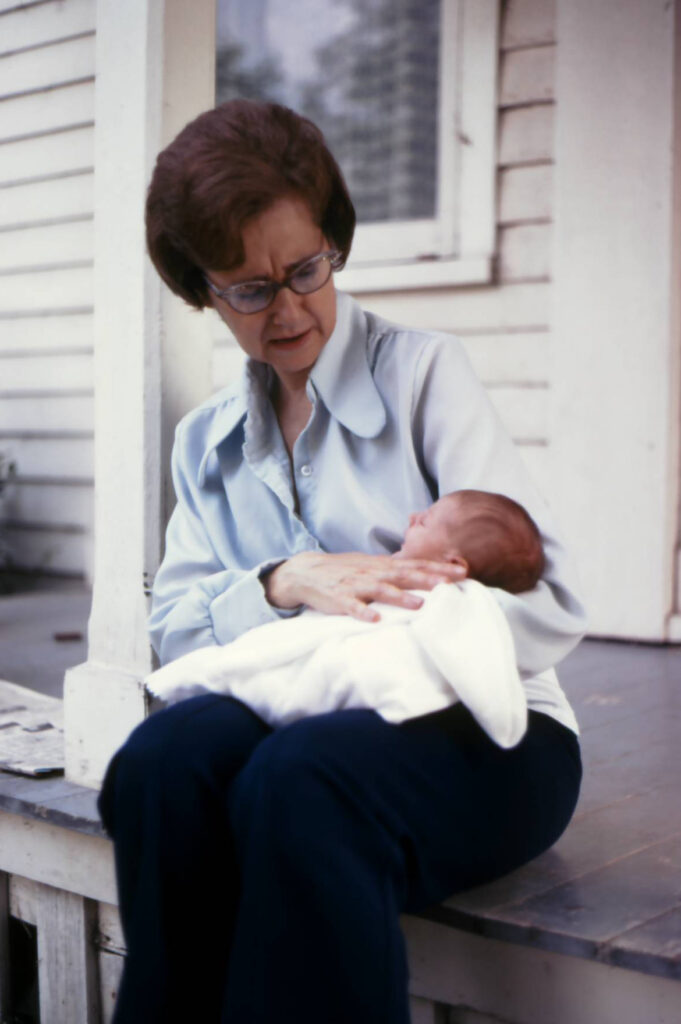
Because their duplex was very small, Kurt and Jean found an 1870s-era farmhouse on 32 Mile Road in Romeo, Michigan, that they rented shortly before Amy was born. Behind the house where there were eighty-eight acres of land where the farmer, who owned the property, grew feed corn for his cattle. A small barn stood to the west of the house where he kept his calves.
Family members often visited the house in Romeo, especially Joyce and Bill Kolnik and their children Willie, Chris and David. During those visits, many hours were spent visiting Metro Beach, roasting marshmallows at an outside firepit in the yard, and watching Willie shoot tin cans with a BB gun in the field behind the house.
After spending many hours on the road between Romeo and the east side of Detroit, where Jean and Kurt attended Calvary Lutheran Church, they decided to move back to the city. First they rented an upper flat on Dickerson and then in the summer of 1973, they bought their first home at 4119 Haverhill, on the east side of Detroit. This was a neighborhood filled with young families with children, so Amy had lots of playmates, most importantly her best friend Kristin Pipiringos, who lived right across the street.
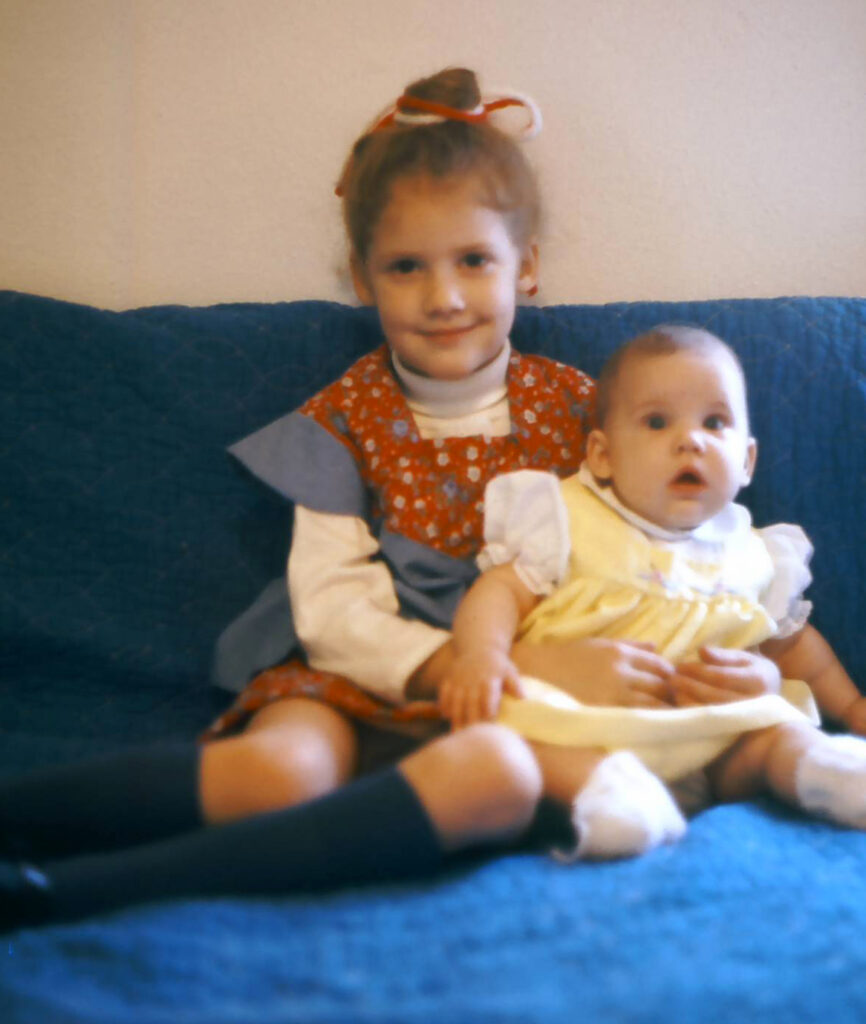
In 1976, one month after Sara was born, Amy started Kindergarten at the Detroit Waldorf School in Detroit’s Indian Village, where she attended school through eighth grade.
After joining St. Olaf Lutheran Church in 1975, and making some life-long friends there, Kurt and Jean decided to move to the west side of Detroit to be closer to the church. They bought a small house at 15765 Oakfield in 1978.
In 1979, Jean began working as program director at Pleasant Hill Family Camp for the Michigan District of the American Lutheran Church. Summers were spent living at Pleasant Hill with Sara and Amy (three and eight years old at the time), while Kurt came up each weekend and vacation time. It was a wonderful place for Amy and Sara to spend their summers, surrounded by a caring staff of about ten people ranging in age from high school and college students to adults.
From 1979 to 1985, Viola and Emil would spend a week each summer at Pleasant Hill with their grandchildren Michael and Melisa Ochonicky and friend Thelma Hemmen. Joyce and Bill Kolnik also visited each summer with Willie, Chris and David. All of these vacations were special times for the grandchildren and their grandparents.
Days were spent swimming in Bass Lake, making things at the art shack, campfires and sleepovers at night and making friends from different parts of Michigan that visited each summer. Sara sometimes spent the entire day in her swim suit.
Jean worked at Pleasant Hill for six summers, the last three years working part-time September through May, planning the summer and hiring and training the staff. It was the best and most fulfilling job she ever had, yet sometimes the most frustrating.
In 1979, Larry Ochonicky got a job working for Ozark Airlines as a computer programmer. During the seven years he worked there, the family enjoyed many trips to Florida and visiting family, using standby travel privileges. Emil and Vi, as Larry’s parents, also enjoyed discounted travel to Europe and visiting family during that time. Trips were also made to the Cardinal’s Spring Training in St. Petersburg, Florida.
At Christmas, Kurt and Jean would travel to St. Louis and all the cousins: Wil, Christine, David, Michael, Melisa, Laura, Amy, and Sara would have an overnight in the basement of Emil and Viola’s house. This usually took place after the traditional dinner at “Aunt” Thelma Hemmen’s house.
1980 – 1989
In 1980, Viola retired from the Famous-Barr department store.
In 1981, Jean and Kurt bought a larger house, at 15848 Oakfield, less than a block from their previous home.
This was also the year that Sara began kindergarten, joining Amy at the Detroit Waldorf School.
Amy graduated from the Detroit Waldorf School in 1984, then attended Mercy High School (an all girls prep school) in Farmington Hills, Michigan. Amy received her undergraduate degree in Architecture from Washington University in St. Louis, lived for one year in New York City, then started graduate school at the University of Washington in Seattle, where she received a graduate degree in Architecture in June of 1997.
Sara attended the Waldorf school until sixth grade in 1987, when she transferred to the Upland Hills School in Oxford, Michigan. She graduated from Uplands Hills in 1990 and went to Mercy High School, graduating in 1994. Sara graduated from Western Michigan University in Kalamazoo, Michigan with a BFA in photography and women’s studies. Later, she earned a Master of Fine Arts degree in photography from the Savannah College of Art and Design in Savannah, Georgia.
In 1986, when Ozark Airlines merged with TWA, Larry joined Anheuser Busch, where he worked as the financial manager of the Management Systems Group. Airline travel was replaced by complimentary beer each month.
All three children born to Larry and Claudia were baptized at St. Lucas Lutheran Church, graduated from Green Park Lutheran School, and then attended Lutheran High School South.
Michael Ochonicky studied at the University of Missouri at Rolla, earning a Mechanical Engineering degree. He joined the St. Louis County Department of Public Works, in Clayton, Missouri.
Melisa graduated from the Barnes College of Nursing.
Laura graduated from the University of Missouri in Columbia with a degree in business and accounting.
Bill Kolnik worked for many years as a draftsman at the Aeronautical Chart and Information Center in St. Louis. He retired in 1987 at age 57.
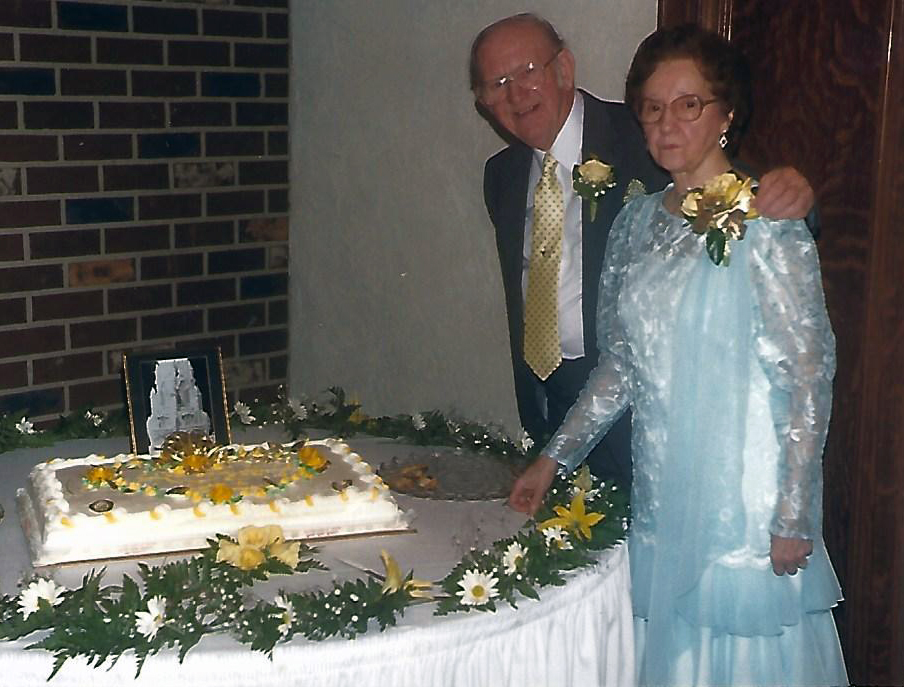
Emil and Viola celebrated their 50th anniversary in September of 1989.
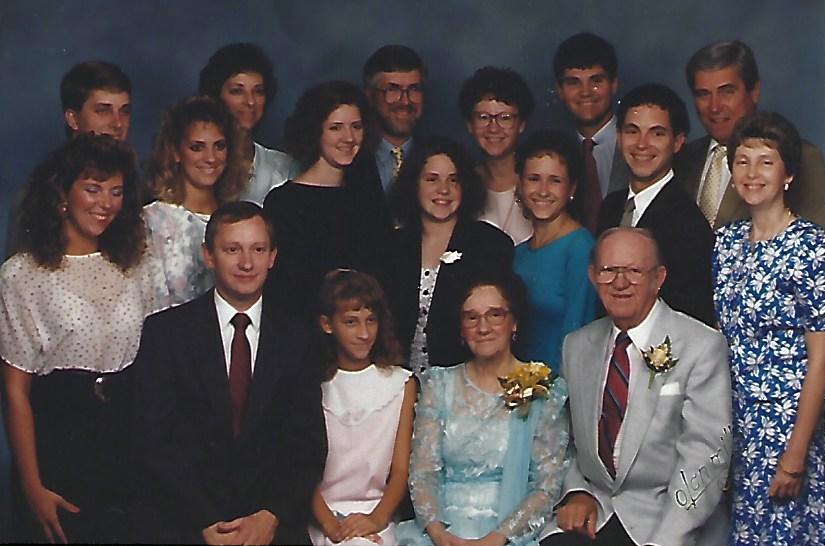
1990 – 1999
Wil Kolnik married Karen Kucera on June 30, 1990 at Sts. Peter & Paul Lutheran Church in Sharon, Pennsylvania.
David Kolnik married Melinda Boeggeman on December 17, 1993. They divorced in May 1995. He later married Maryann Seidelmann. They adopted four children.
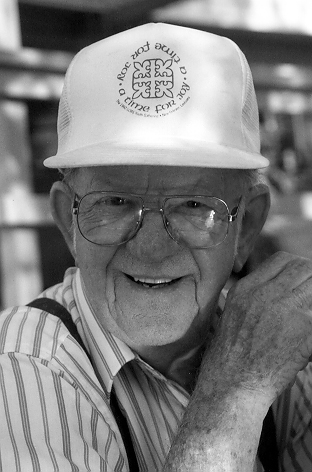
Emil continued to work one day a week at Schmidt’s Market in Soulard until he became suddenly ill. He died at Deaconess Hospital in Saint Louis on August 8, 1996, four weeks after his 80th birthday. He was buried at Concordia Cemetery at 4209 Bates in Saint Louis.
Just before Emil’s death, Viola lost much of her sight. For the next four and a half years, Viola was able to continue living in her home with the primary support and care of her daughter Joyce and son-in-law Bill Kolnik.
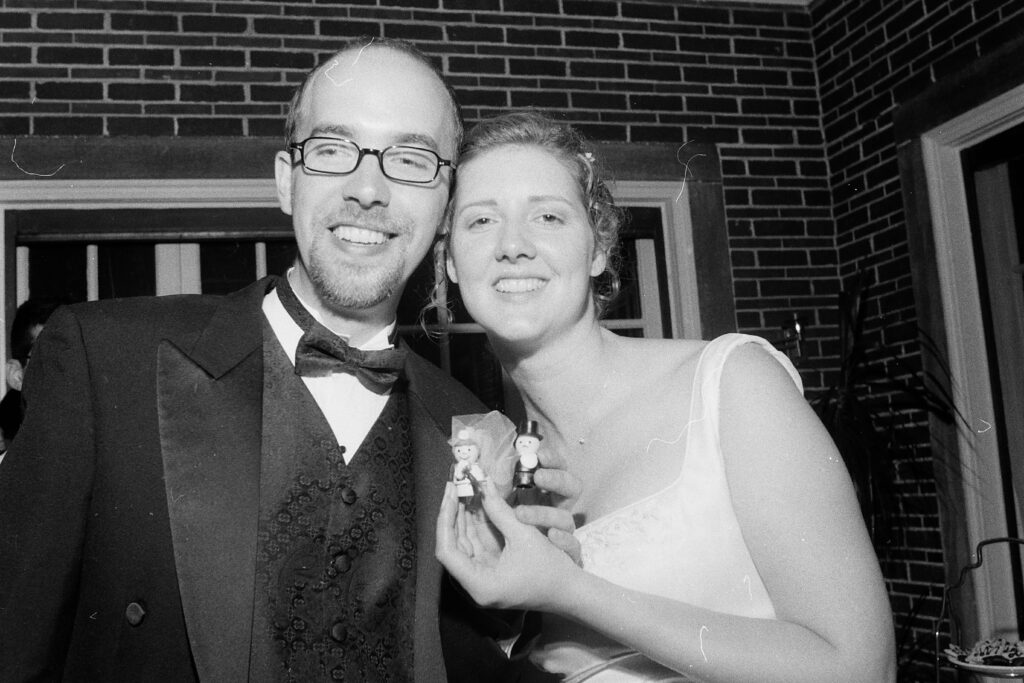
On September 5, 1999, Amy Struckmeyer married James Andrew Skalla at Good Shepherd Lutheran Church in Oak Park, Illinois.
2000 – 2009
Melisa Ochonicky married Nathaniel Rabbitt on July 14, 2000.
On February 24, 2001, five weeks before her death, Viola moved to Delmar Gardens Nursing Home. She died on April 1, 2001 at St. Anthony’s Hospital after a fall at the nursing home. She was buried next to Emil at Concordia Cemetery in Saint Louis.
Sara Struckmeyer married Christopher William Masson on May 25, 2002 at Weller’s Carriage House in Saline, Michigan.
Christine Kolnik married Steven Dozier on January 4, 2003 in St. Louis.
Michael Ochonicky married Cynthia in 2003 in Arkansas.
Laura Ochonicky married Nicholas Charles Tuttle on September 23, 2006 at St. Lucas Evangelical Lutheran Church in St. Louis.
Kurt Struckmeyer retired from the General Motors Design Center in 2005 after nearly 36 years with the company.
